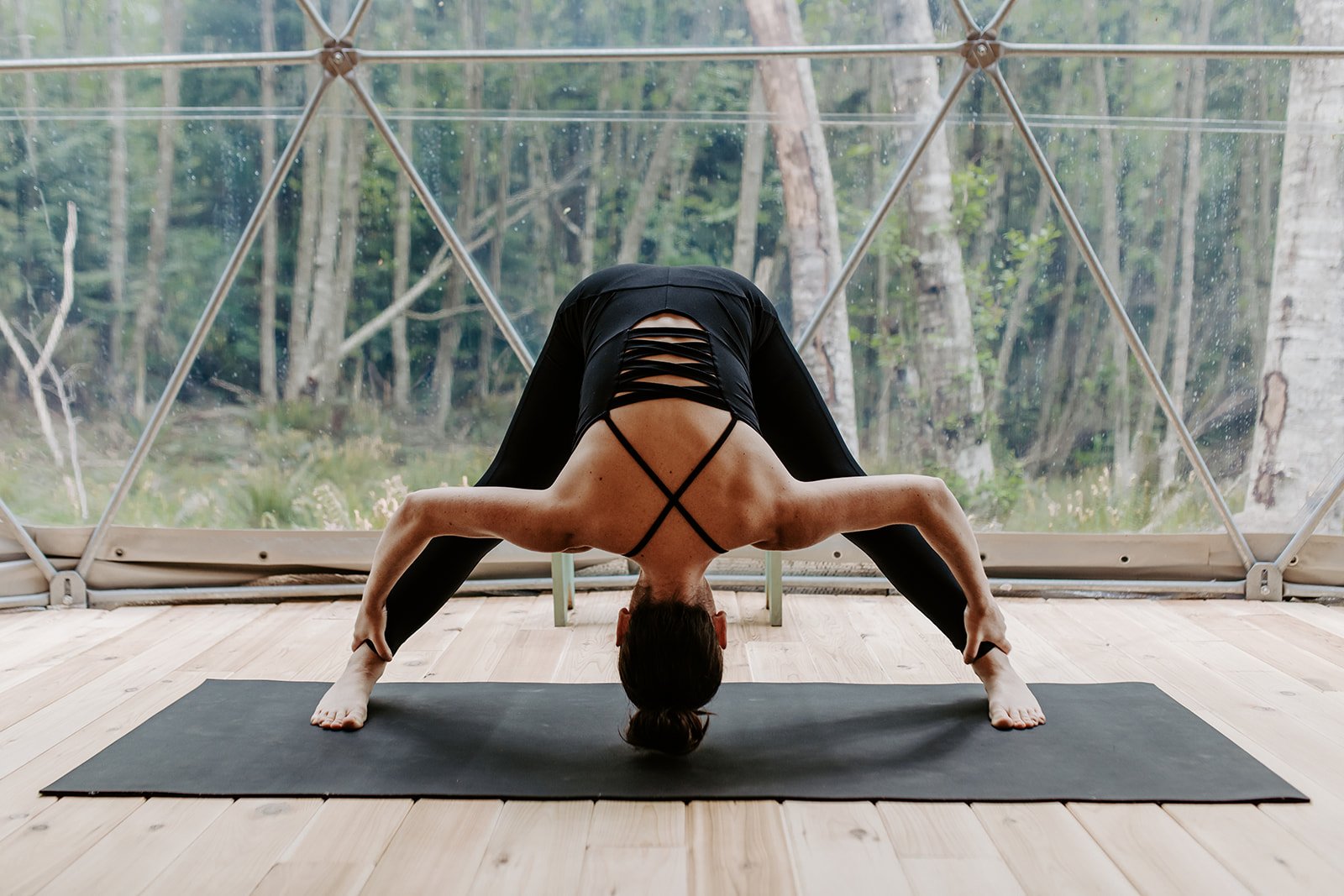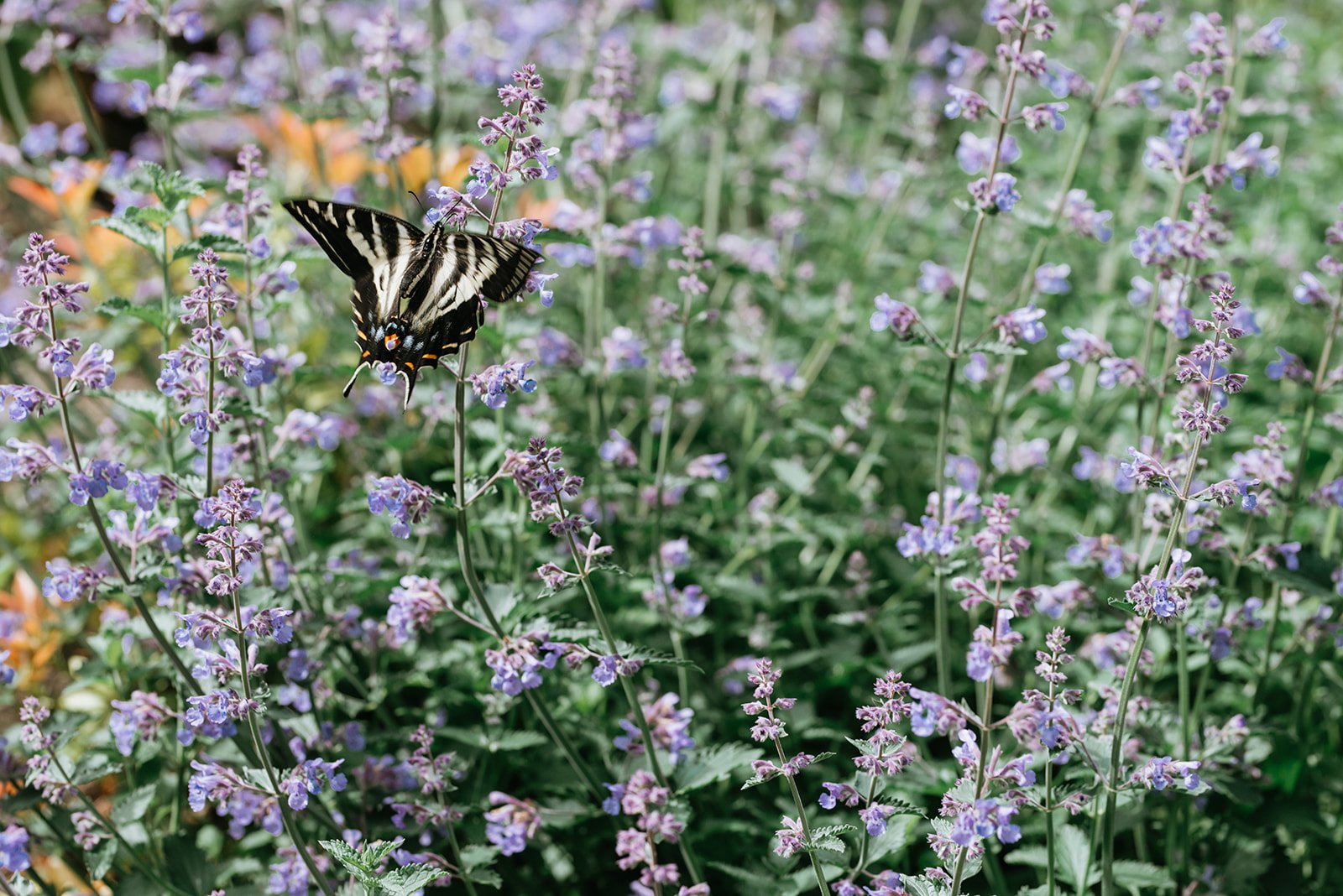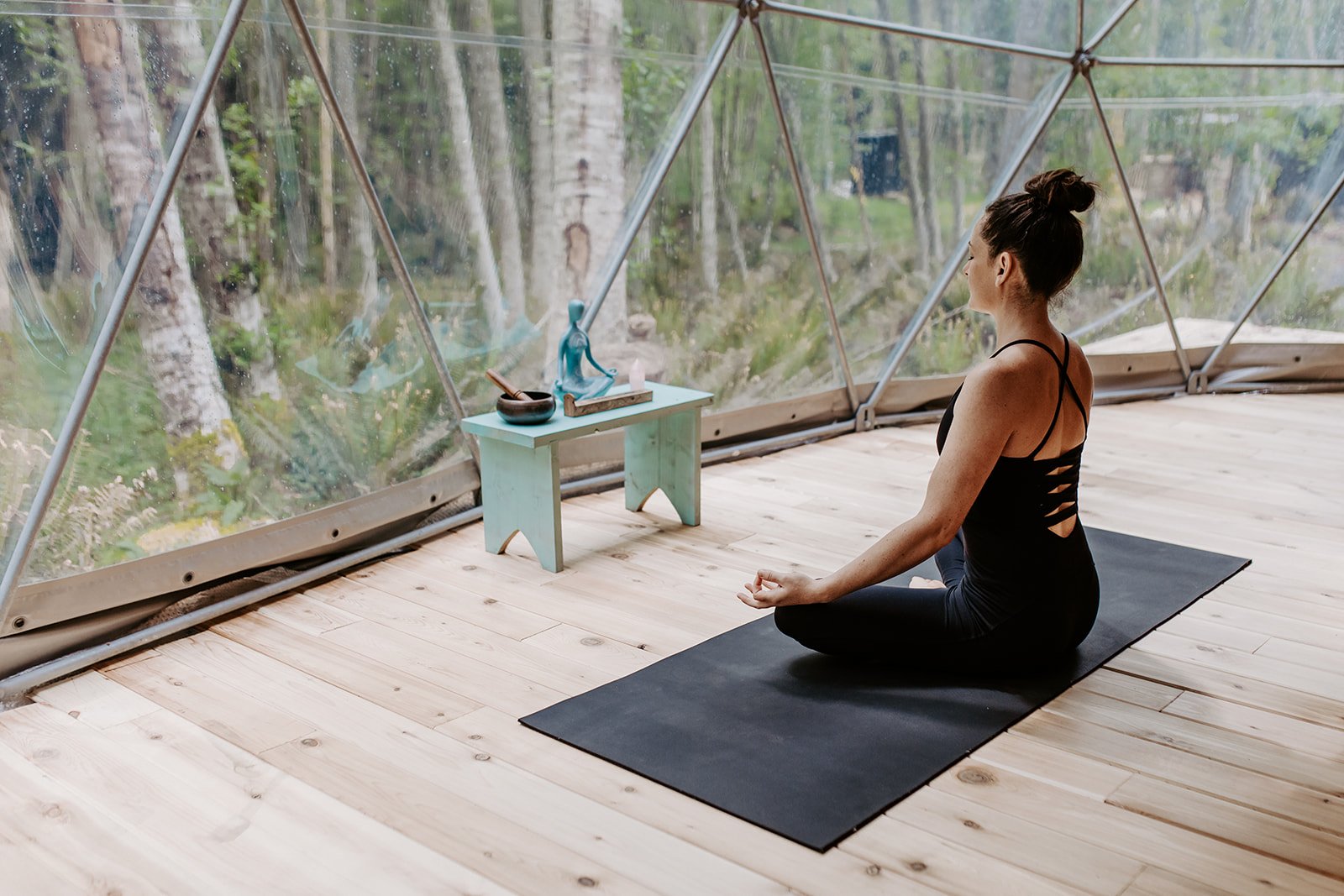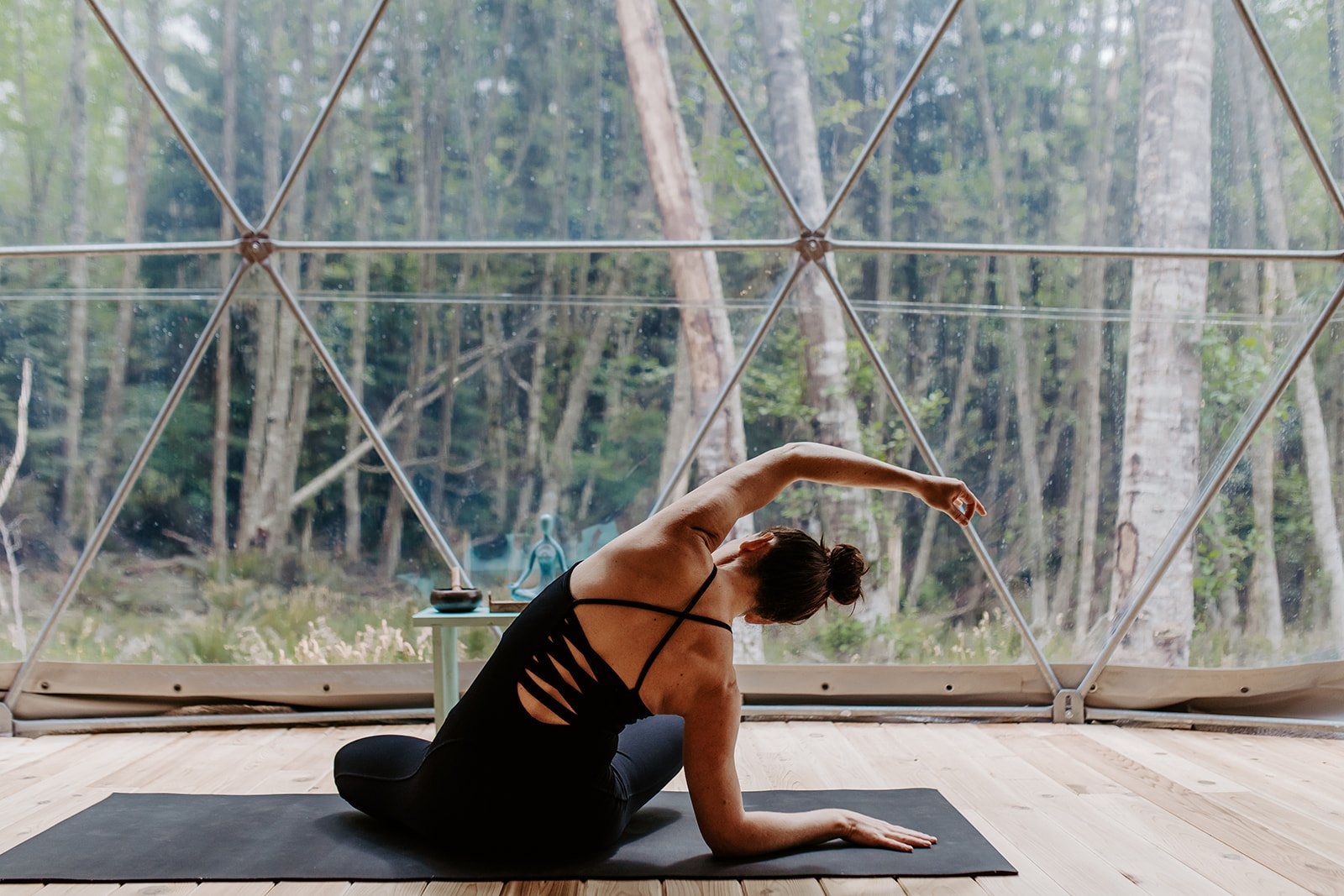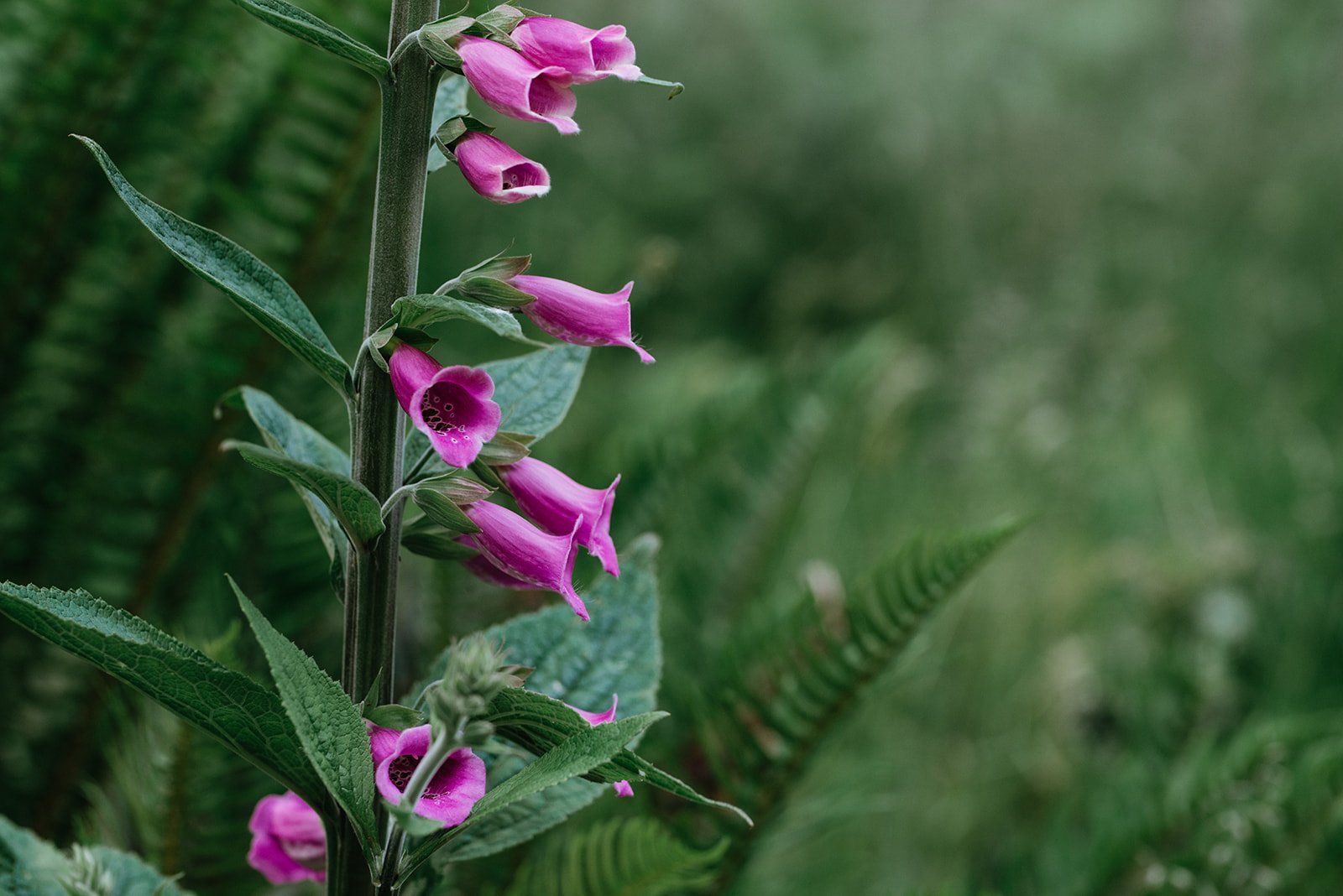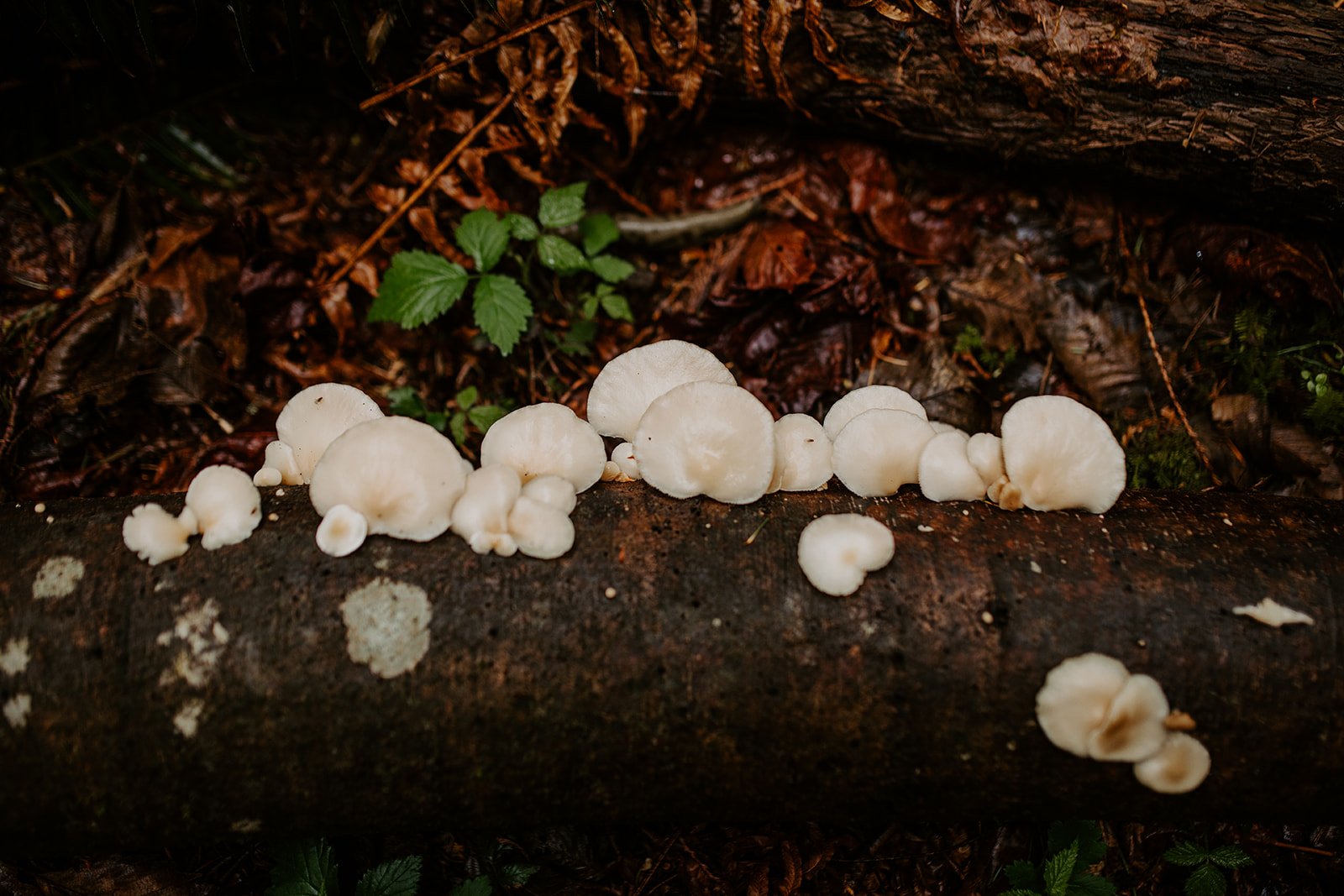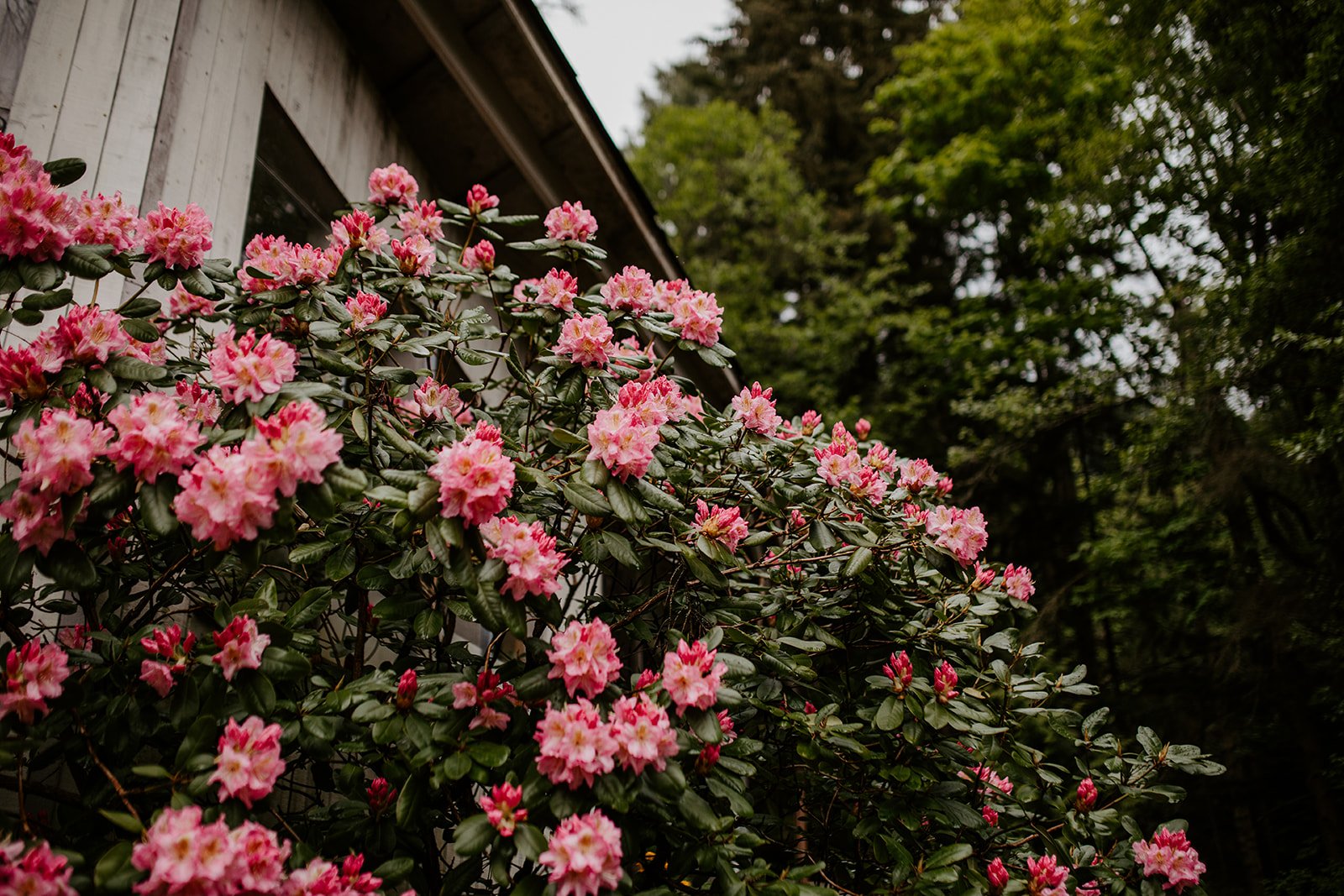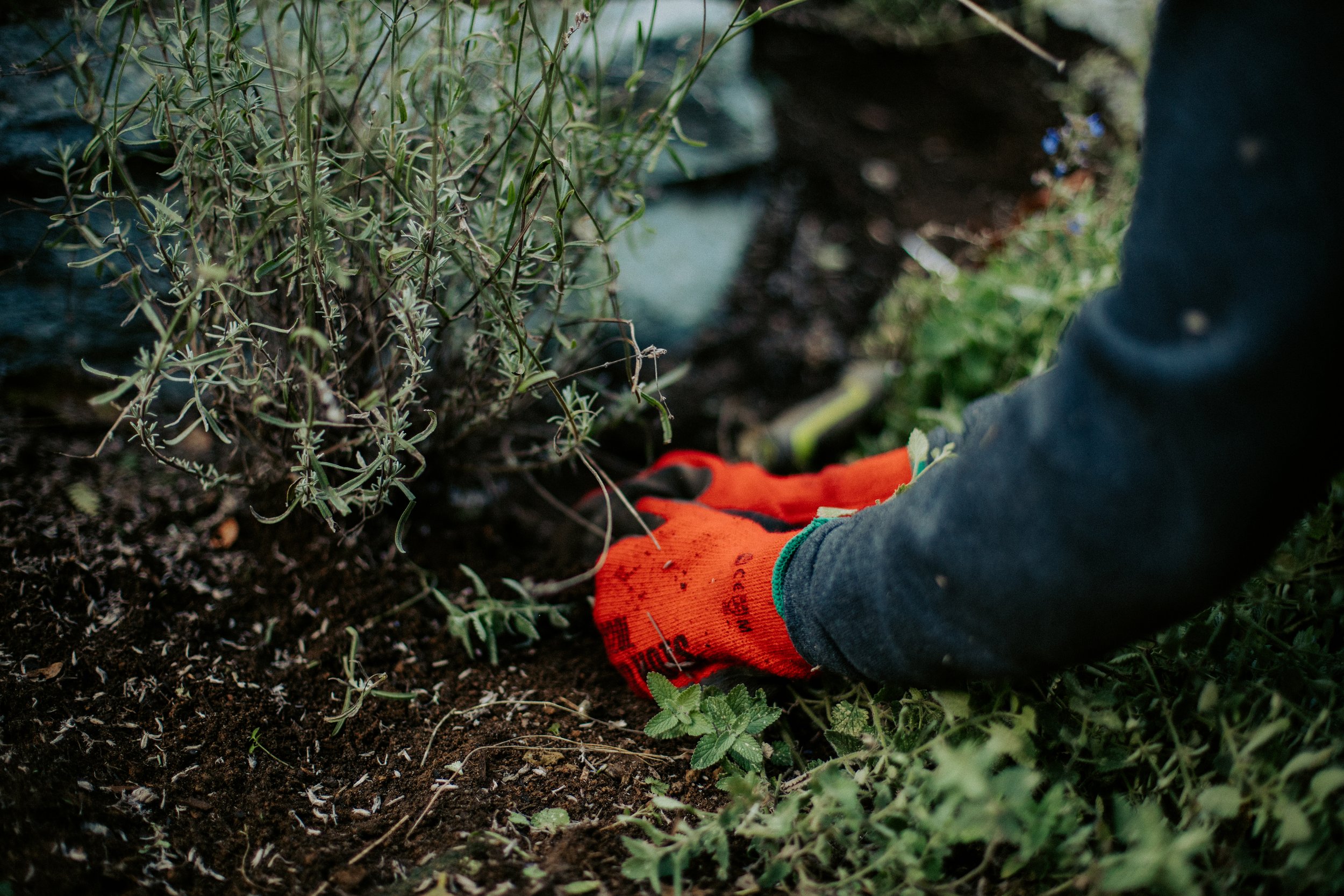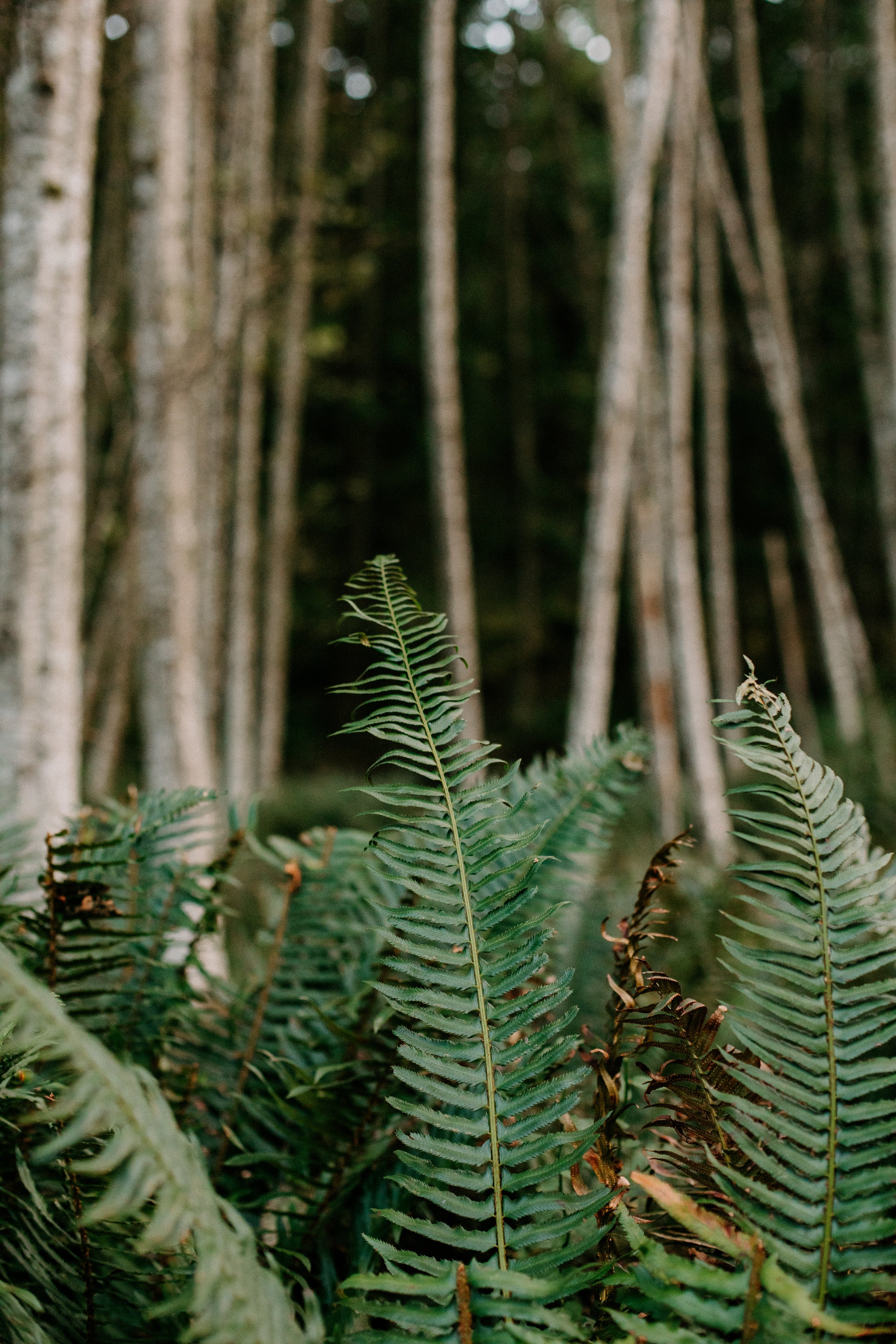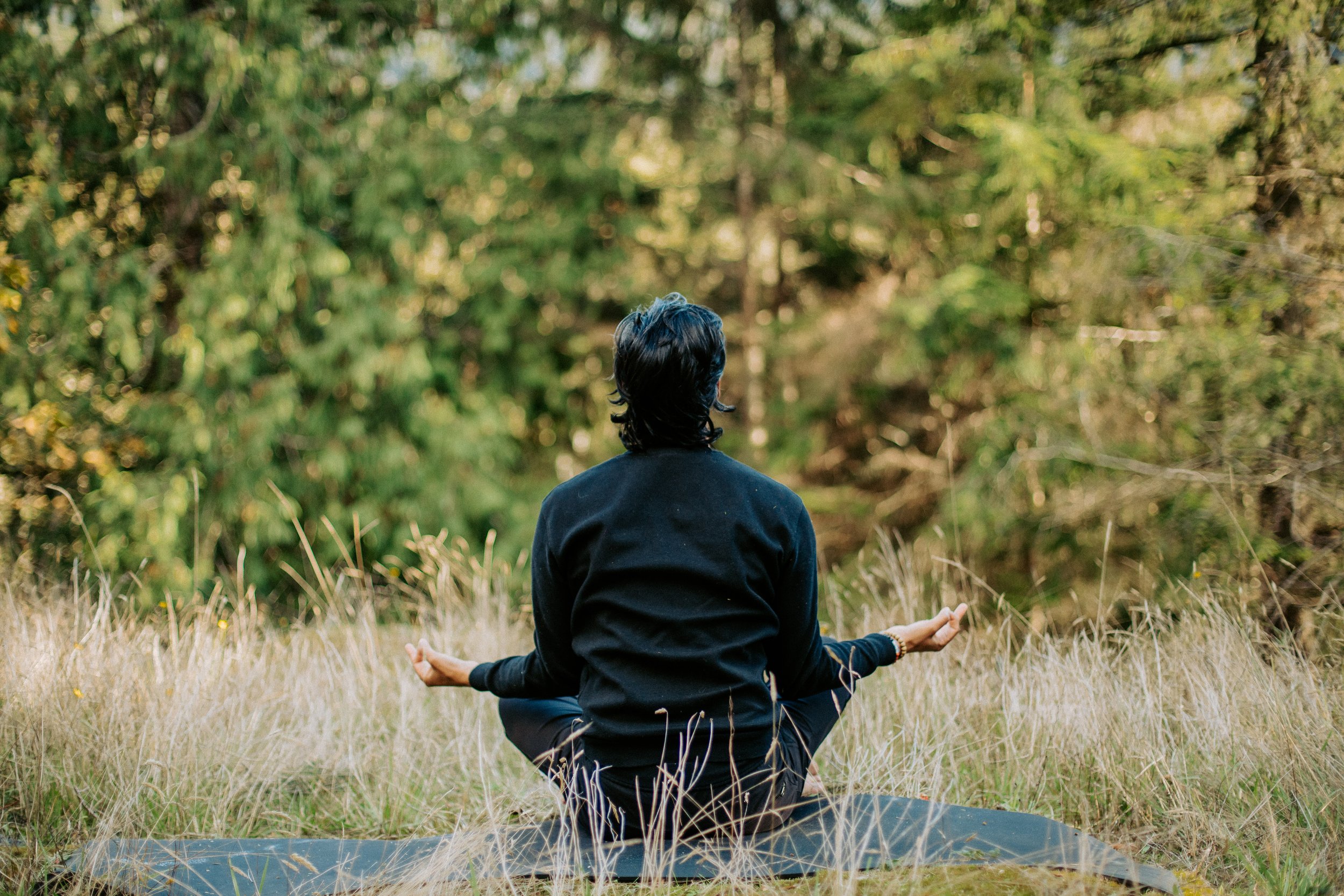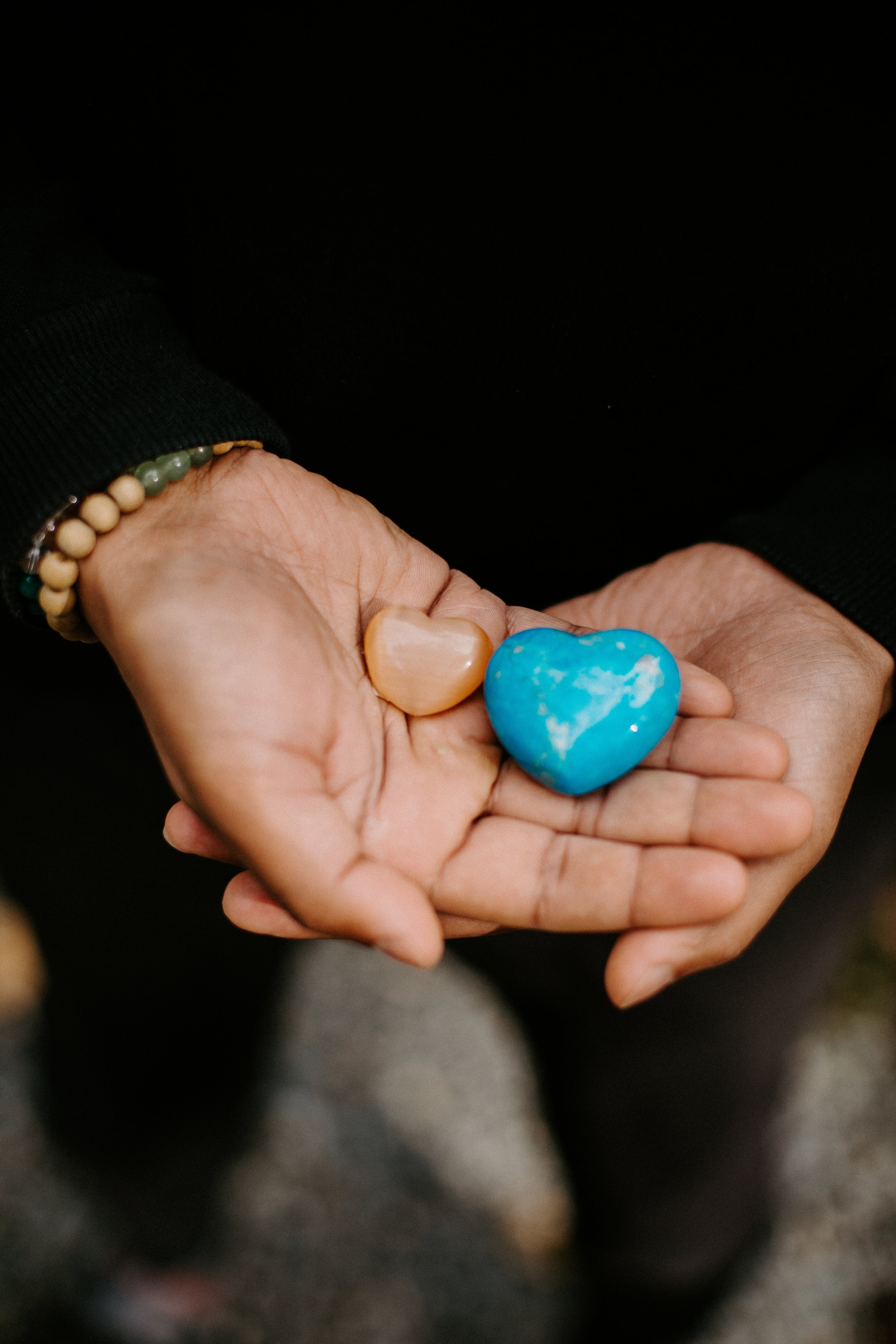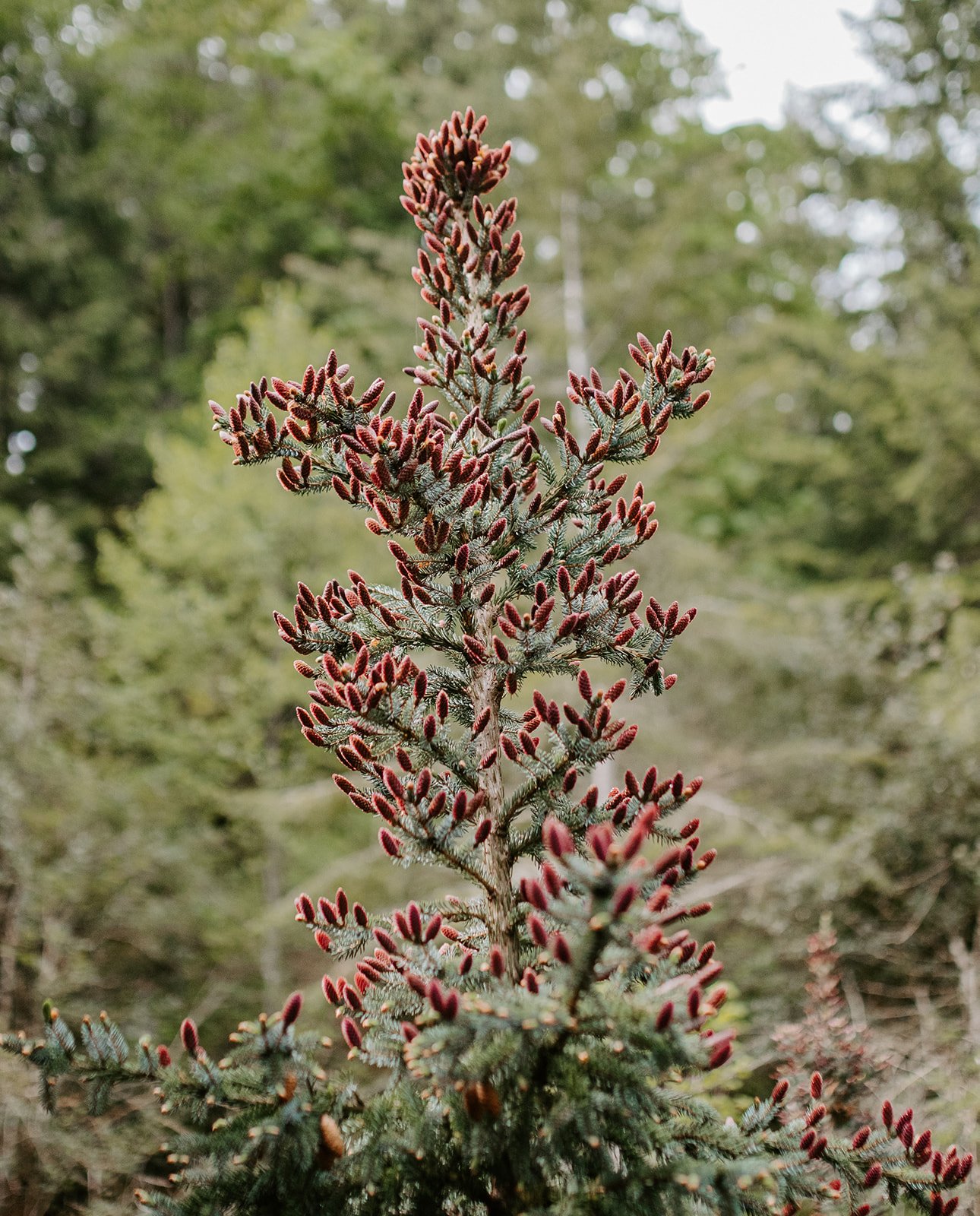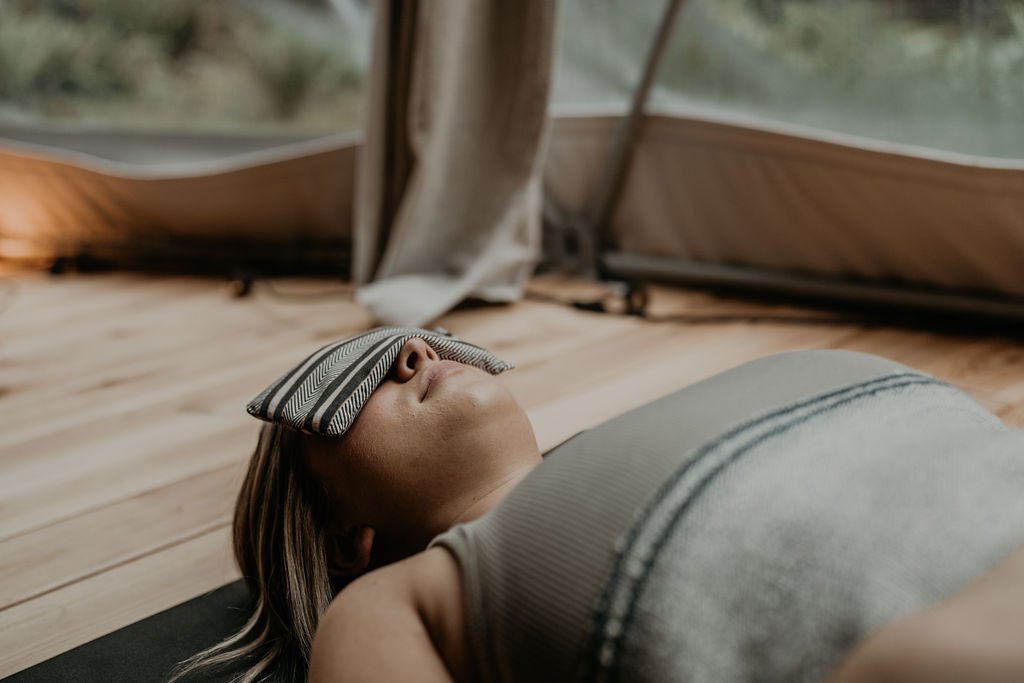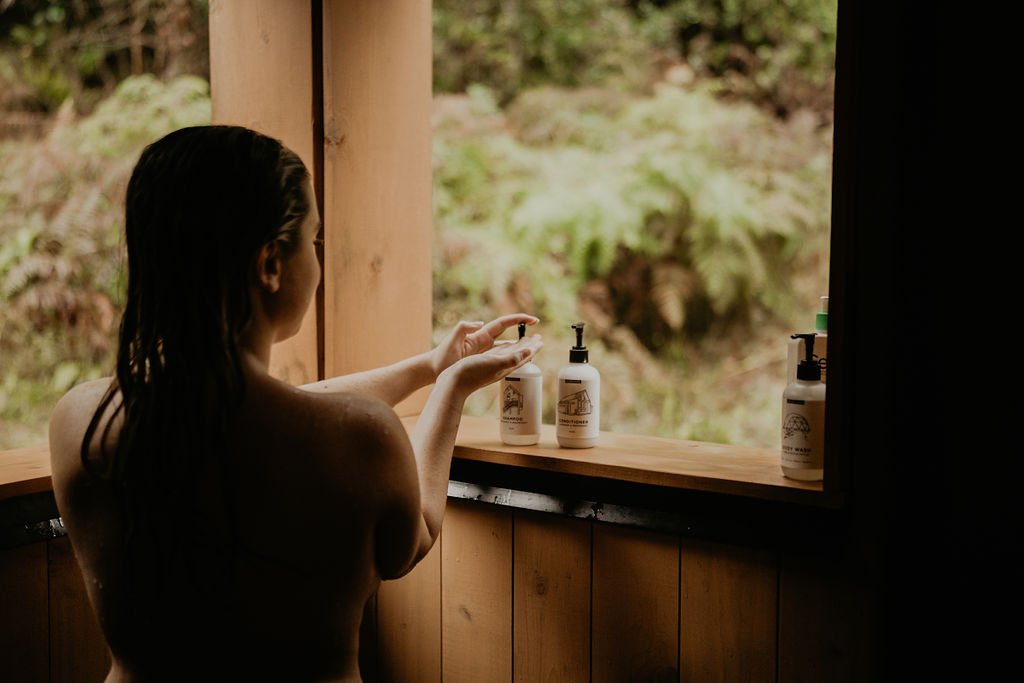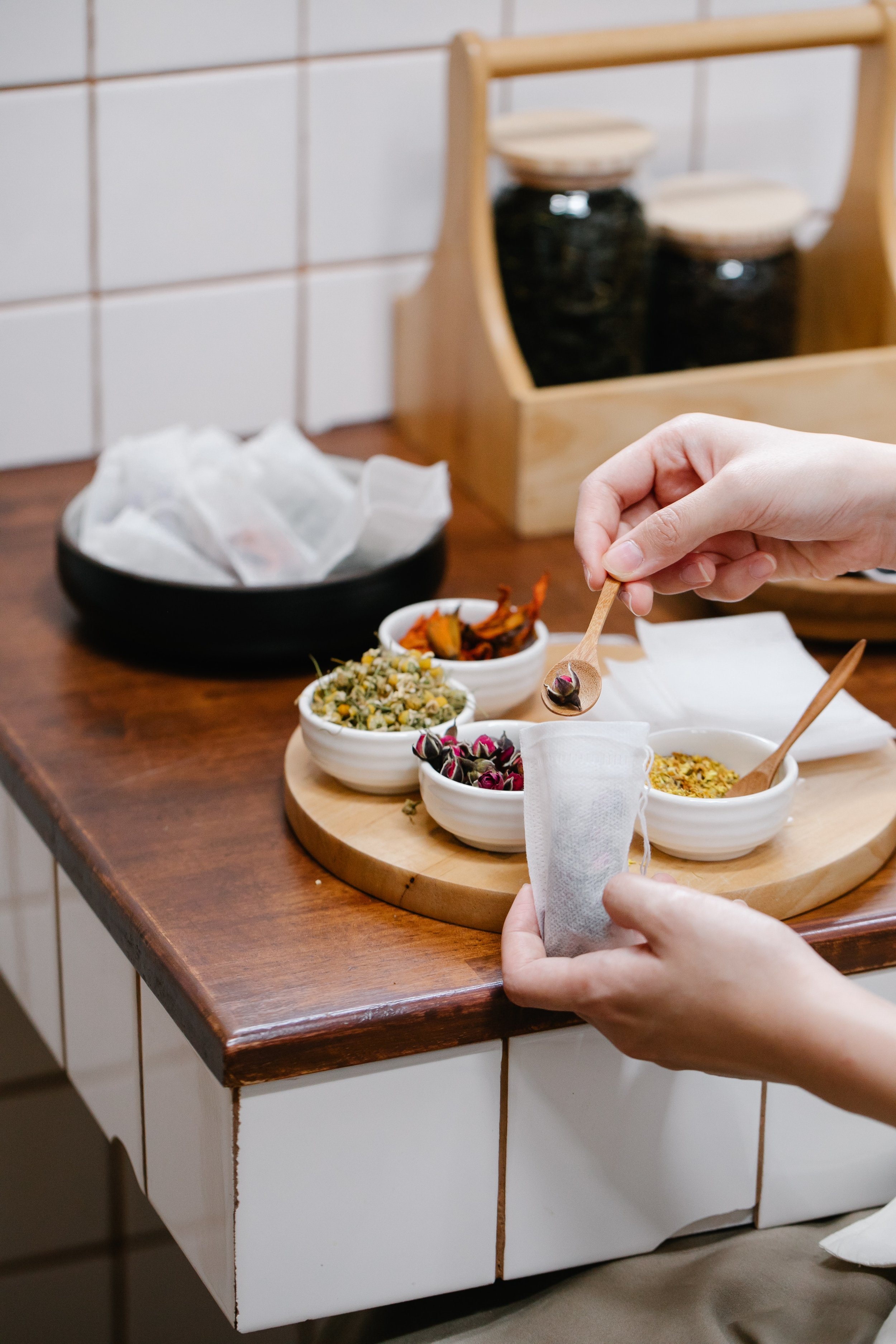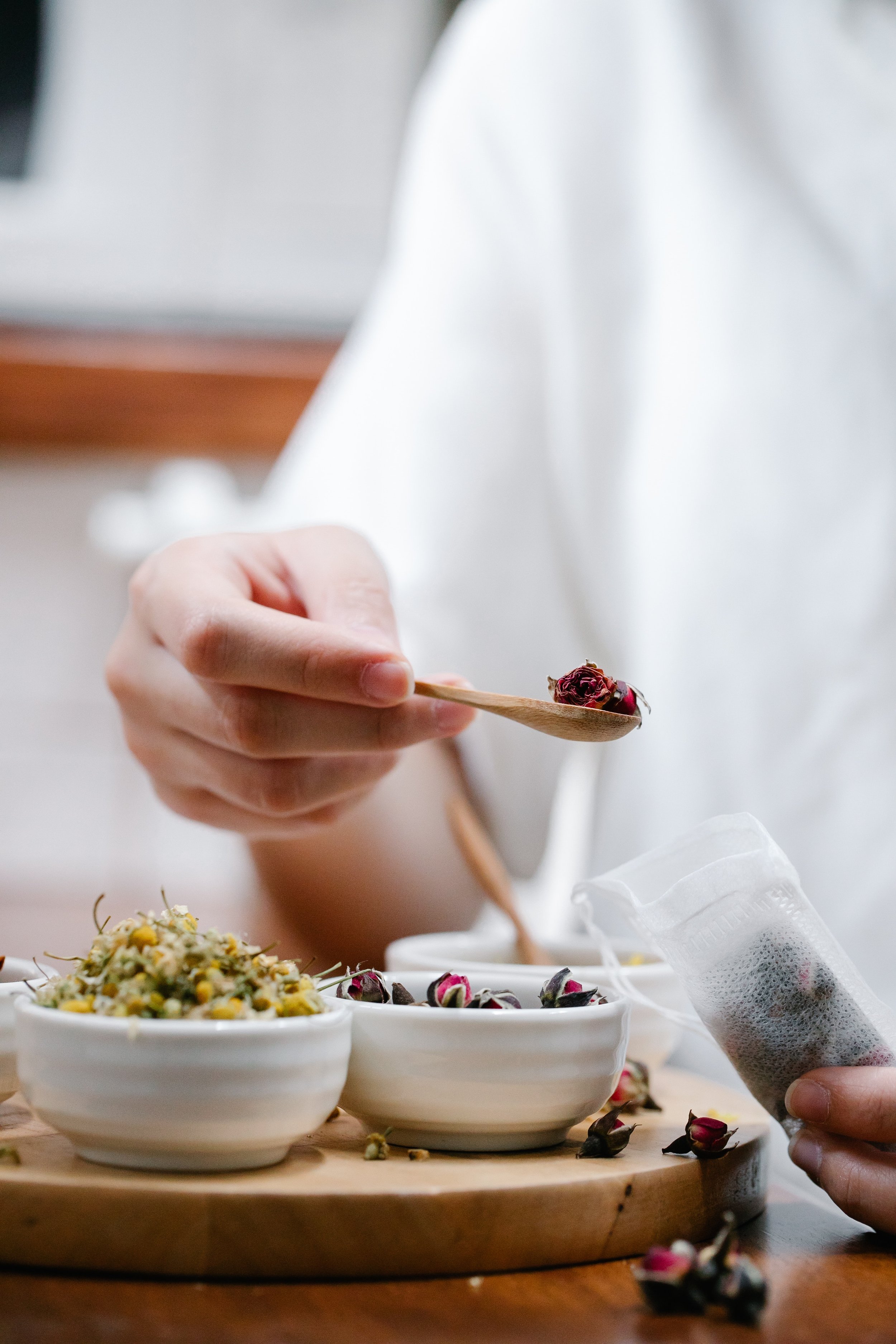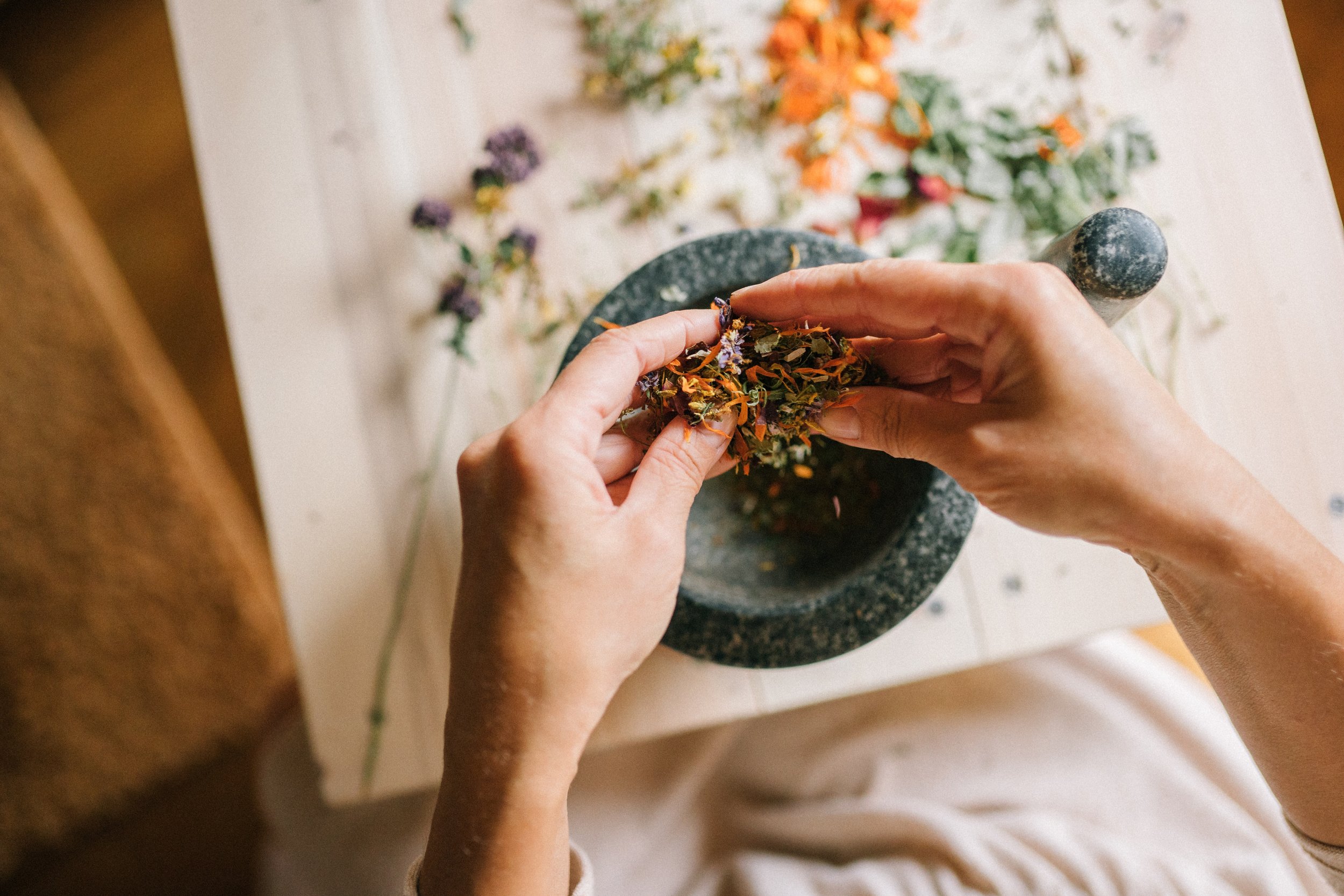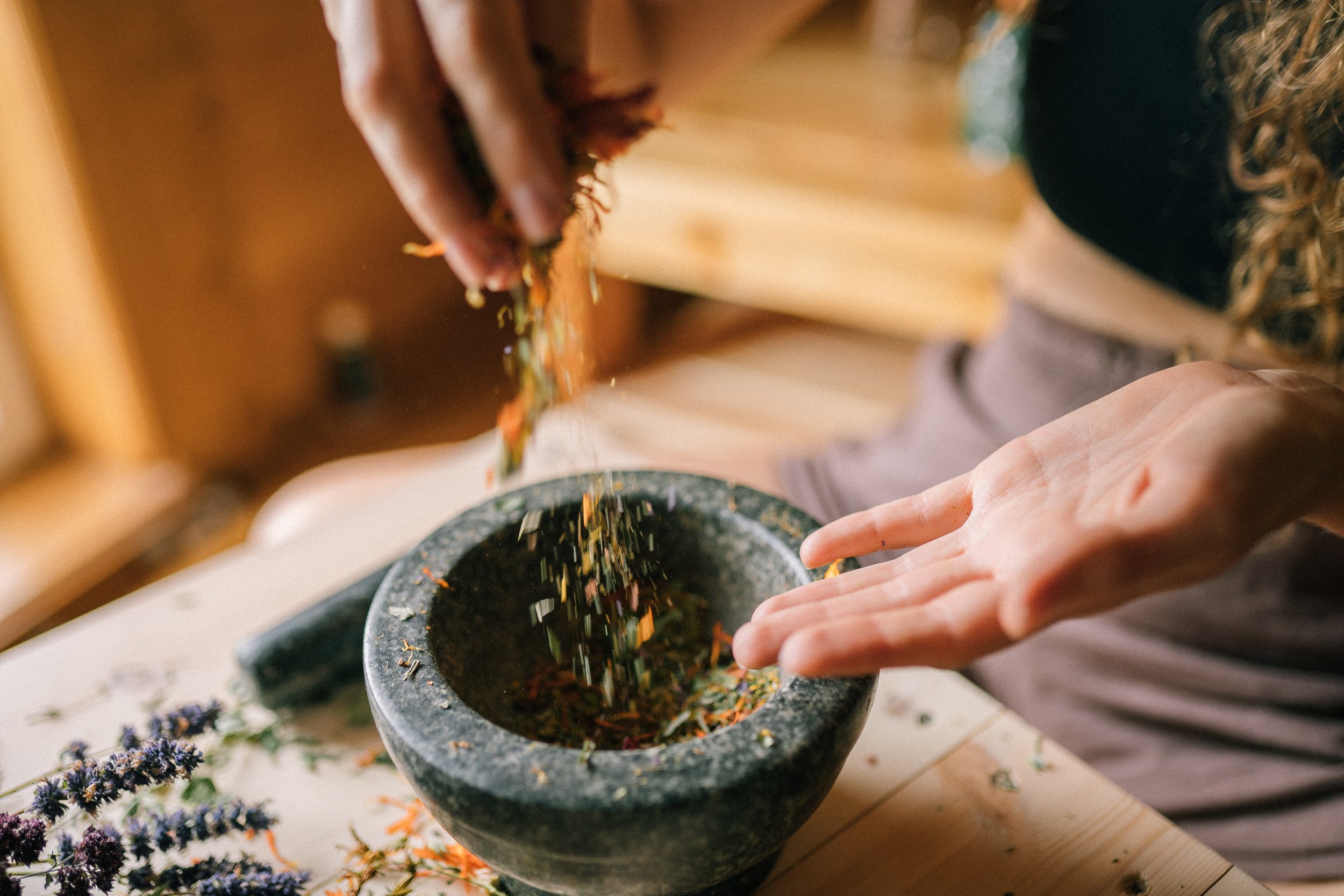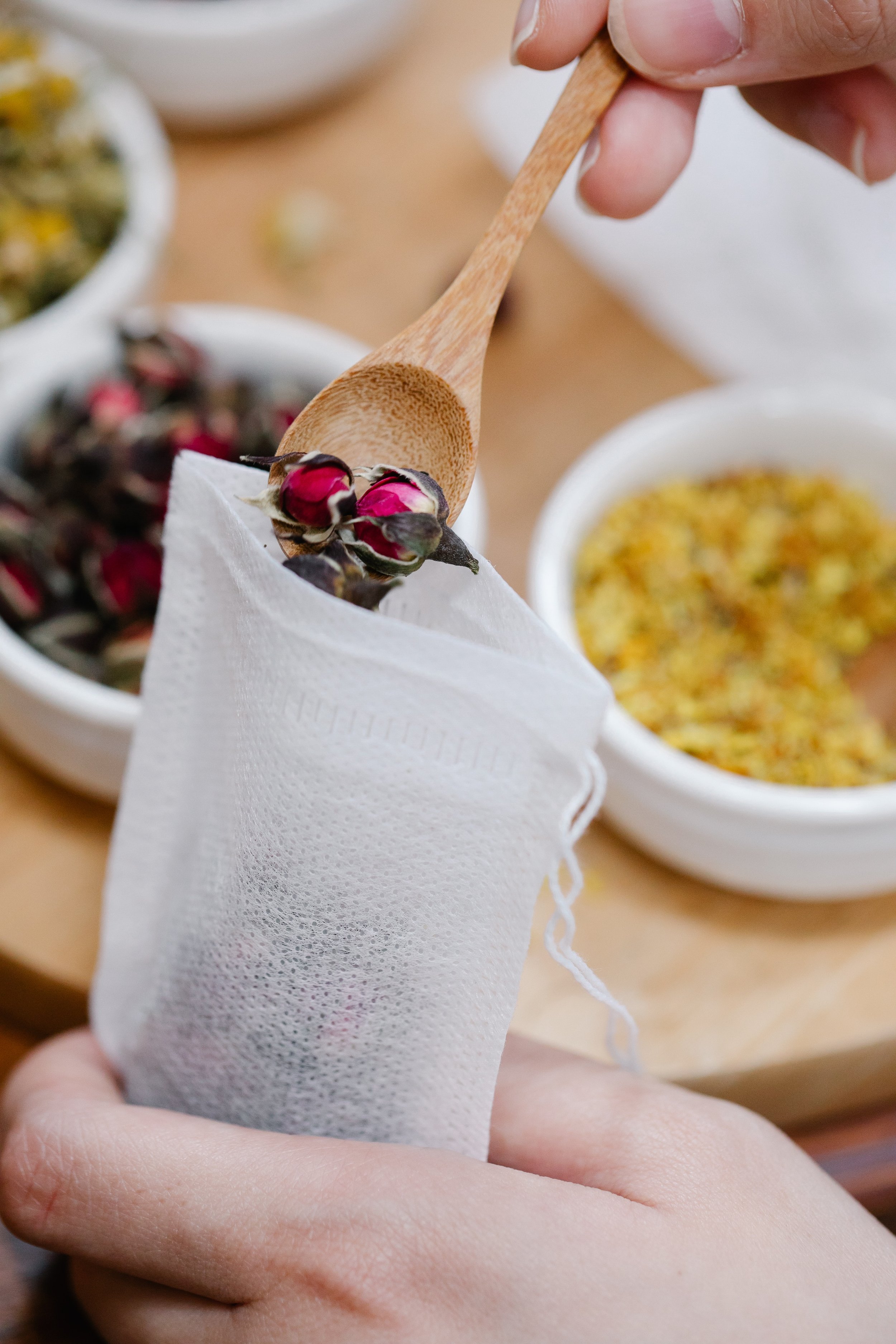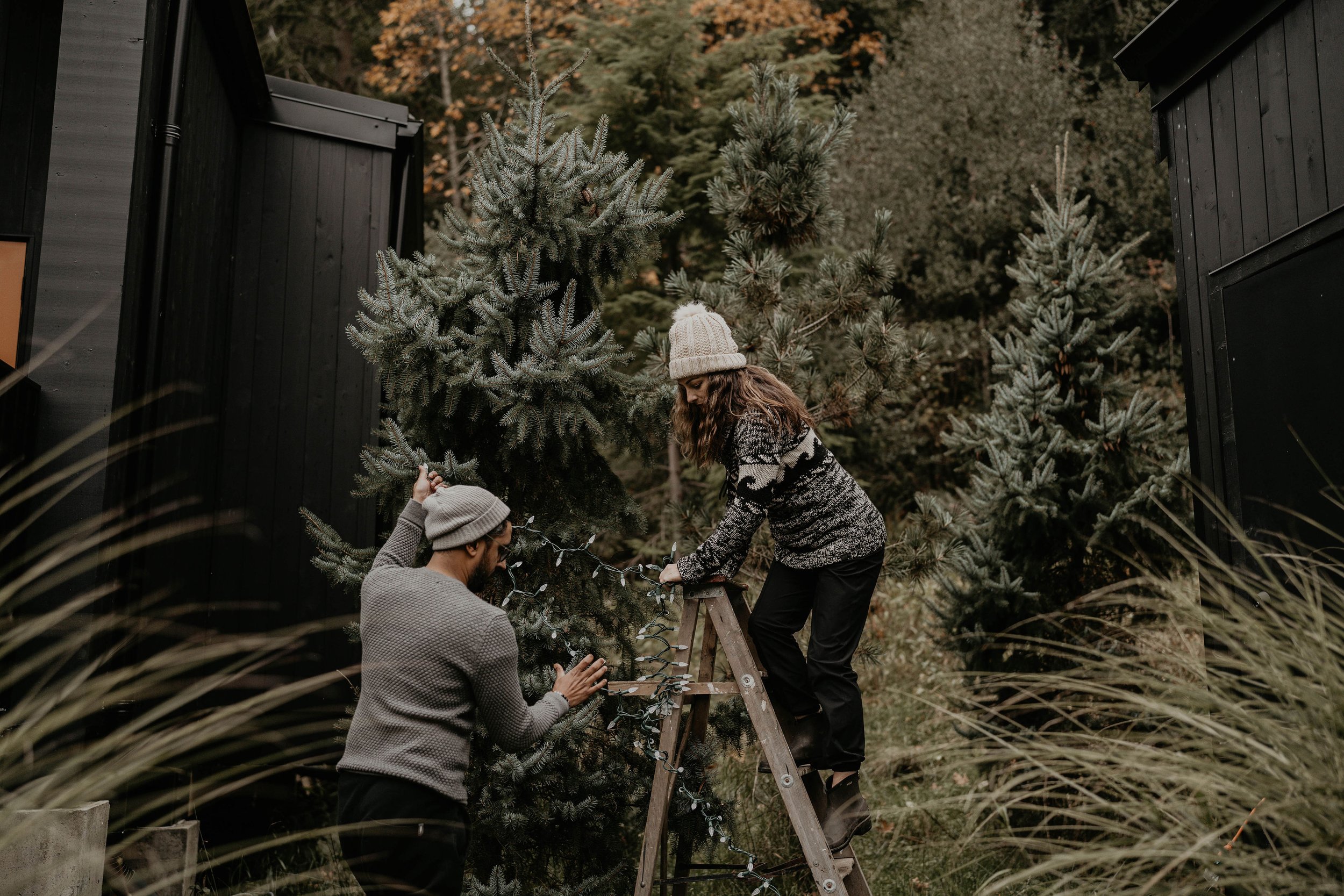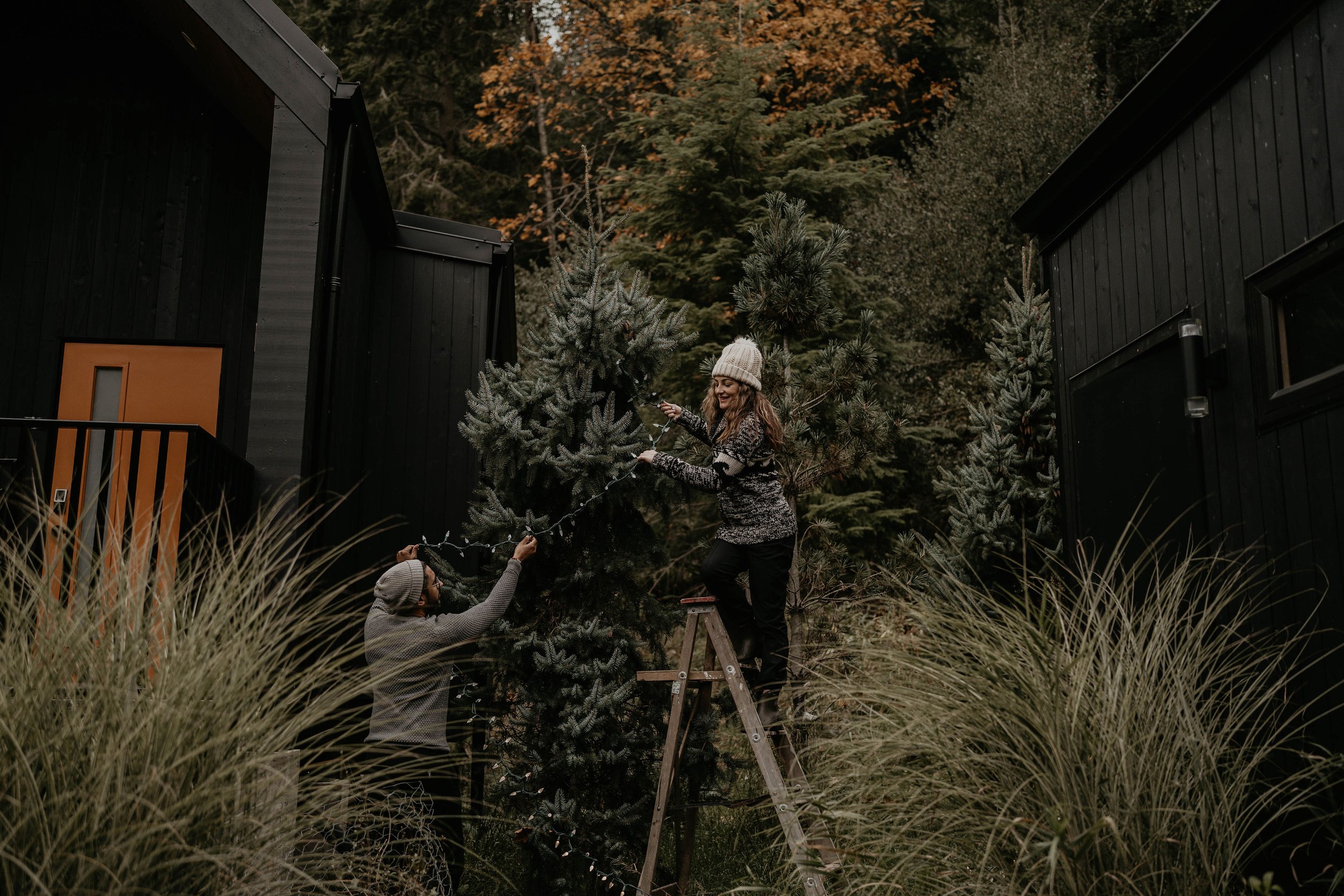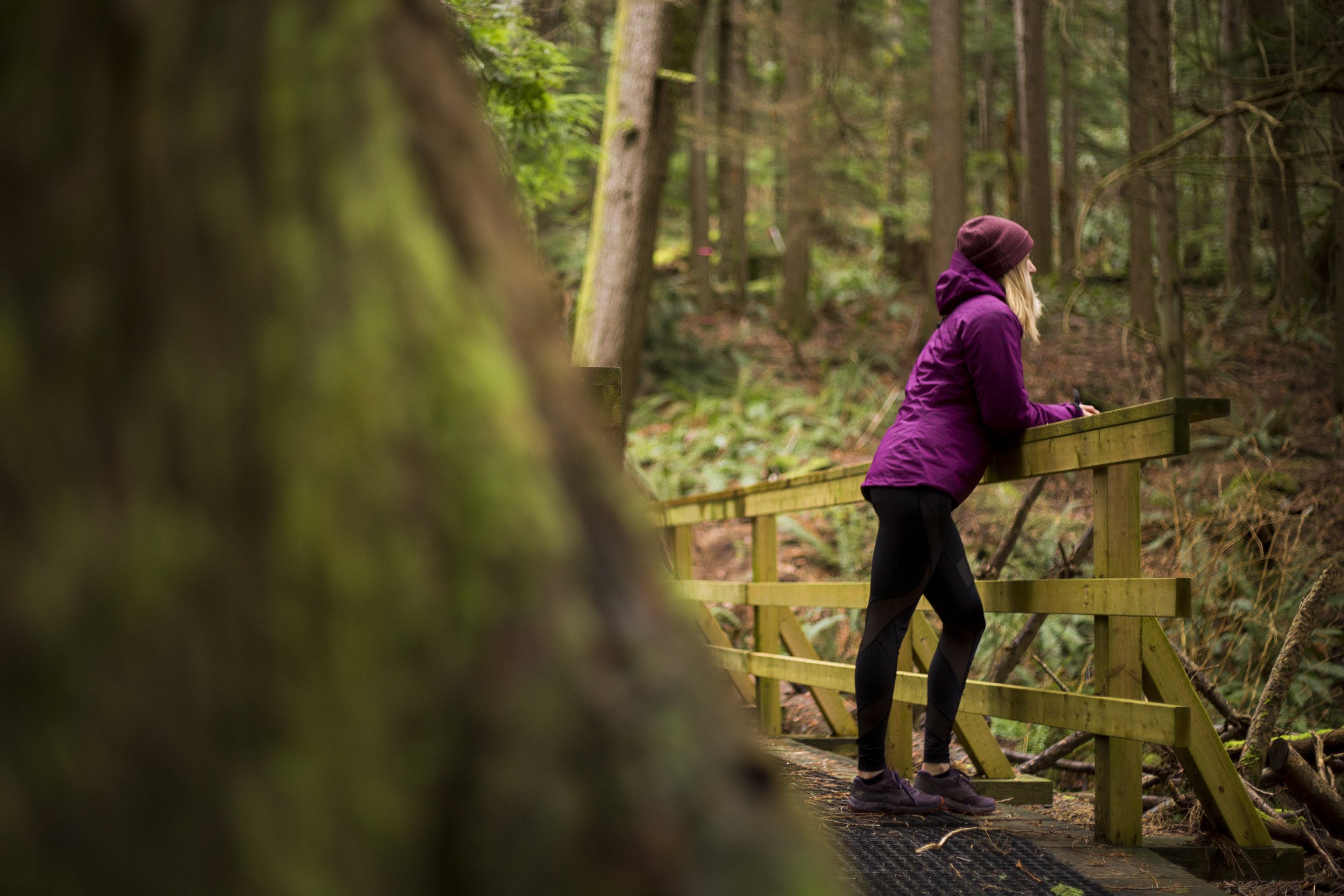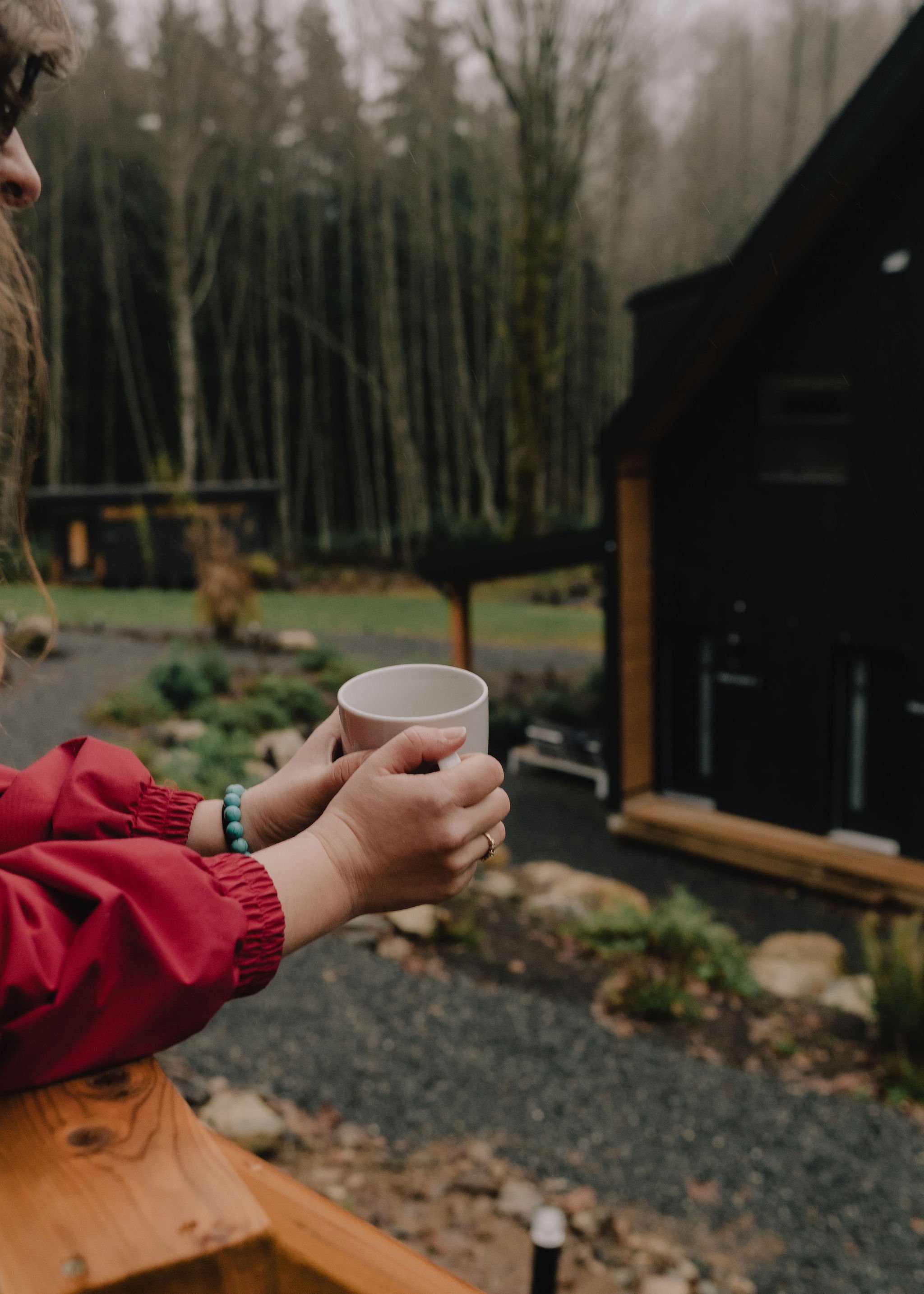The practice of Saucha extends to our relationship with the land. It means centering and learning from the Indigenous groups, such as the Coast Salish peoples, and traditional earth-relating cultures. It calls for mindful consumption, reducing waste, and living in harmony with animals, plants, air, waterways, and other elements in Nature. It means a return to living and consuming seasonally. By being conscious of our ecological footprint, we acknowledge that humans are here for a reason, and to not waste this opportunity to steward this Earth. Saucha reinvites us back to circular living.
Brahmacharya Practices to Adopt this Summer
As we move into the Ayurvedic season of Pitta, it's important to consider how we can stay balanced during the heat of summer and protect our energy. One way to do this is by practicing Brahmacharya, one of the five Yamas of Yoga. Brahmacharya is often translated as celibacy or sexual restraint, but it also encompasses the proper use of energy in all areas of our lives.
In Ayurveda, Brahmacharya is seen as a way to conserve our vital life force, or "prana," which is essential for physical, mental, and spiritual health. By preserving our energy, we can live a more balanced and fulfilling life, free from anxiety, stress, and burnout.
The word "Brahmacharya" is derived from two Sanskrit words: "Brahma," meaning the absolute or divine, and "charya," meaning behaviour or conduct. Therefore, Brahmacharya is often interpreted as the "right use of energy."
Practicing Brahmacharya involves cultivating self-discipline, self-control, and mindfulness. This includes our relationships, work, hobbies, and daily habits. It involves being mindful of our thoughts, words, and actions and making choices that align with our highest purpose.
During the Ayurveda season of Pitta, practicing Brahmacharya can be particularly beneficial. The season's heat and intensity can lead to agitation, irritability, and burnout if we don't take steps to protect our energy. By practicing Brahmacharya and incorporating daily rituals that help us stay balanced, we can conserve our energy and direct it toward our highest purpose.
One way to practice Brahmacharya during the Pitta season is to incorporate daily rituals that help us stay balanced. Here are a few ideas:
Wake up early: Ayurveda recommends waking up before sunrise to align with the natural rhythms of the universe. This helps us feel more energized and focused throughout the day.
Practice Yoga: Yoga is a great way to move our bodies and calm our minds. During the Pitta season, it's best to practice gentle, cooling poses like forward folds, seated twists, and gentle backbends.
Meditate: Meditation is a powerful tool for conserving energy and calming our minds. You can start with just a few minutes each day and gradually increase the time as you feel more comfortable.
Eat cooling foods: During the Pitta season, it's essential to eat cooling and hydrating foods. This includes fresh fruits and vegetables, coconut water, and herbal teas.
Stay hydrated: Drinking plenty of water and electrolyte-rich drinks like coconut water helps us stay hydrated and cool during the heat of summer.
By incorporating these daily rituals into our lives, we can practice Brahmacharya and protect our energy during the Pitta season. When we conserve our energy and direct it towards our highest purpose, we can live a more balanced and fulfilling life.
Looking for some in-person guidance on where to start incorporating these practices? Book your 2-Night Nectar Yoga Experience package here and spend some time slowing down with us in nature.
Sources Cited:
Acknowledgment and thanks to the contributing writers for the resources of this publication; Segal Shah via The Art of Living, Rolf Sovik via Yoga International and Esther Ekhart of Ekhart Yoga
As always, sending gratitude to our community near and far, both for taking the time to explore our blog and for walking the path to your best self - we hope this resonated and aided you in finding peace and balance within.
If you feel called to share your feelings and practices surrounding the practice of Brahmacharya, please do so in the comments below or send us a message via email.
All Photos - Copyright Nectar Yoga
Spring Cleaning with Intention and Celebration (Around the World)
With the daylight stretching longer and longer each day, the energy surrounding the seasonal shift into Spring has many of us feeling uplifted and motivated by the lengthened daylight hours as well as the buds of growth everywhere in nature.
Typically this motivates us to take a closer look at what we are keeping in both our physical and mental spaces, and make space to declutter what we no longer need (ultimately making space for new beautiful things to grow).
All around the world, there are various traditions, celebrations and holidays that essentially all mark the season of light, planting anew, and (re)birth. In this thread we outline the unique details of some of the more popular ones, however, encourage you to dig deeper and explore your own lineage or interests relating to traditions around this time of year marking a universal time for planting and growth.
Chinese New Year – China
In the lead-up to the Chinese Lunar New Year, people perform a preparatory cleaning of their space, sweeping away the dust and debris of the past 12 months in a symbolical gesture to make room for good fortune to come. It’s important that the tidying session be wrapped up by the stroke of midnight – any cleaning on New Year’s Day itself is said to sweep away good luck.
Songkran Water Festival – Thailand
The arrival of the spring season marks the new year in Thailand and the Songkran Water Festival is a celebration of rebirth. This tradition originated with people throwing water at each other to be cleansed of misfortune, negativity and to welcome luckier times ahead. However, in more modern times, this celebration has taken the symbolism of water to a new level as elaborate water celebrations drench entire streets for days.
Persian Nowruz - Several Middle Eastern countries
Persian Nowruz, observed in Iran (as well as many other countries, including Afghanistan, Iraq and Kazakhstan), is a New Year’s celebration that’s preceded by spring cleaning. The Iranian calendar is a solar calendar that honours and syncs with the seasons.
Nowruz coincides with the spring equinox in March, fittingly translating as “new day.” To mark this elemental time of renewal, belongings are sifted and sorted through, floors are scrubbed, closets decluttered and re-organized, and items collecting dust that no longer spark joy are rehomed. This sometimes begins weeks before the equinox to ensure enough time is dedicated to this process of shedding the old and welcoming in the new alongside the rhythms of nature.
Holi – Northern India
Holi in India is a country-wide social sanction to have fun, with a lot of vibrant colours that lift mood and a practice that may be originally linked to a time when colourful, natural medicinal plants were used for healing. Participants take to the streets for the “Festival of Colours” where they cover each other in colourful solutions and powders. Holi has a large social significance in the country, and the tradition is also celebrated with special treats.
Spring Equinox in Teotihuacán – Mexico
While the Spring Equinox is celebrated all over the world in different ways, it is much more significant in Mexico. People dress in red scarves and white robes, burn incense, perform ritual dances, and climb to the top of the Pyramid of the Sun, spreading their arms to follow the traditions of their ancestors, there they perform long-upheld rituals, with a belief that they will receive strong energy.
Cooper’s Hill Cheese-Rolling and Wake – Gloucester, England
For over two centuries, Gloucestershire's small English village has been host to this unique annual tradition called Cooper’s Hill Cheese Rolling and Wake. In this event, a round of Gloucester cheese is rolled down the hill, with participants racing down the steep hillside after it. The goal is to go after the cheese and ultimately catch it. Participants often end up tumbling head-over-heels and falling down the slope.
As mentioned, these traditions around the world are separated by practices, culture, and continent, however, they each involve a similar message; welcoming the arrival of the spring season and celebrating all that is to come.
Perhaps let this serve as a reminder how we are all interconnected with each other and the shifts in nature.
Sources Cited:
Acknowledgment, citation and thanks to the contributing resources of this publication, Fani Ntinoudi, Esme Benjamin, and Faith Davis.
Gratitude to our community near and far, both for taking the time to explore our blog and for walking the path to your best self - we hope this resonated and aids you in finding balance within.
Tell us in the comments what rituals you practice as we move towards the yang seasons of light and growth.
All Photos - Copyright Nectar Yoga
Dinācharya For Deeper Connection
Have you heard of “dinācharya” before?
It is the Ayurvedic term for a daily regimen that is followed to support the maintenance of a healthy life. There is also the term and practice of “rutucharyā”, which is the Ayurvedic word to encompass our seasonally-influenced rituals for optimal wellness. More than likely, you have put it into practice in various forms over the span of your life.
Around this time of year, we are seeing the concept and various themes of romantic love all around, as Valentine's Day approaches. With this heavy push of certain ideals upon us (particularly in the Western world), this is also an invitation to dive-in deeper, and reflect on how we love and respect ourselves through a consistent dinācharya.
The energies of this month can be harnessed to examine and reflect on your deepest love connections, starting with your relationship with yourself and what commitments you are upholding to ultimately walk your best path.
In this post we will delve into the benefits of dinācharya and what they can include. And as mentioned above, perhaps you already have a version of one or more of these rituals, or you already have a daily wellness practice (even if on an off-and-on basis). May this serve as a reminder or encouragement for each of us to journey into our own versions of dinācharya, apply it in our lives and ultimately reap the most benefits from it.
*This article is inspired by a recent course led by Jenna Furnari and some of her specific references. Along with cited sources, you can find a glossary below with Ayurvedic and other less-common terms that are included throughout this article.
Under the teachings of Ayurveda, establishing a physical routine for the body can help to create balance beyond the physical, and extends all the way to seek an internal balance relating to finding your mental and spiritual alignment, as well as your own unique energetic dosha. Learn what your dosha is here. The many benefits of following closely to a daily rhythm include both cultivating and maintaining a seasonally-regulated Agni), the domino impact being a healthy self-esteem, general vitality, and overall longevity - to name just a few. Integrating the daily regimen of dinācharya supports an overall grounded quality within, even while life continues to move through constant transitions.
Below is an introduction to a few steps you can take to begin bringing the practices of daily Ayurveda into your life through dinācharya, presented below, specifically as a morning ritual.
*As with most authentic wellness practices, this is not a one-size-fits-all regime. It’s important to seek additional resources and support (from trusted and recognized sources), along with getting medical clearance if relevant to your specific context, to compile your own unique version of what is outlined below.
This morning routine sets the tone and ample opportunity to maximize the potential of the rest of your day.
Tools for Dinācharya
Tongue Scraper
Sesame and/or Coconut oil
Neti Pot
Nasya Oil
Morning Dinācharya
Rise before the sun
Splash cool water on your face
Drink warm lemon water
Visit the toilet
Scrape your tongue
Oil pulling *Learn why and how to do this
Rinse with a Neti pot
Follow up with Nasya oil nasal massage
Abhyanga with coconut or sesame oil
*Benefits of daily massage include bestowing good health and nourishment to the body, which slows down the aging process and supports restful sleep.
Glossary of Terms :
Agni: Our internal, biological fire that aids our ability to digest, absorb and assimilate the food that we eat, the experiences we have and the emotions that occur within. This transformation also takes place with the sensory impressions that come our way.
Abhyanga: A self-given body massage
Āyurveda: This system of medicine is translated as the science of life, originating from India.
Dinācharya: A daily regimen followed to support the maintenance of a healthy life.
Imbolc : The halfway point between Winter Solstice and Spring Equinox/Ostara).
Kriyas: Specific sets of exercises, breathing techniques and sound mantras practiced to unlock energy channels or chakras in the body with intention.
Nasya: A method of administering herbal oil through the nostrils as a therapy for one of the five major senses.
Neti: A body cleansing technique used for nasal irrigation and cleansing of nasal membranes. This simple therapy has many benefits for the both the body and the mind.
Sources Cited:
Acknowledgment and thanks to the contributing resources of this publication, Jenna Furnari for her supplied content, and inspiring this entire article, and Aruna Bakhru via literature included in “Nutrition and Integrative Medicine: A Primer for Clinicians.”
Gratitude to our community near and far, both for taking the time to explore our blog and for walking the path to your best self - we hope this resonated and aids you in finding balance within.
Tell us in the comments what mornings rituals you look forward to most.
All Photos - Copyright Nectar Yoga
Winter Dream Work + DIY Dream Pillow
As we step into a new year, in the Northern Hemisphere, we are held in the yin energy of the winter months alongside the in-between Ayurvedic seasons of Vata and Kapha.
During the day, as we move through the cold months, you may notice a gradual and incremental return to more vibrancy and drive within yourself. The upcoming Kapha season (Kapha season lasts from the second half of winter through spring), is the time to go deeper into any exercise program with specific attention placed on movement and a time to solidify your commitments to yourself and your plans for the near future.
However, in the dream world, there is a juxtaposition to these daylight hour natural motivations forward.
You may notice that your dreams have been revisiting issues in your past. During these natural outer-world shifts, your time in the dream world is susceptible to revolve around very old memories, both desired and undesirable, often playing out to recreate new scenarios.
Take notice of how you feel when you awaken, reflect on what your dream may be asking you to pay attention to or hold space for. Consider what the lessons may be from the dream, and if it is asking you to make a choice or step into action, then reflect if you’re ready.
What matters with dreams is how you relate with them. What are you learning? Is it asking you to show up in a new or renewed way?
A meditative craft that can be supportive in your dream work is making a Dream Pillow.
You can typically create a dream pillow with materials that you already keep in your home.
What you’ll need:
A small muslin or cotton drawstring bag
Favourite calming herbs (dried)
Crafting the dream pillow itself is a mindful exercise on its own that offers its own calming effects. If you’re using multiple herbs, pour them into a bowl and gently mix them with a small spoon or your hands. Breathe in the smells that waft around you as you set your intentions for what you desire to manifest in your dream work.
Use a spoon or small scoop to pour the herbs into your drawstring bag, secure it tightly, and place it under your sleeping pillow (or beside your bed).
The ritual of making a dream pillow can be done as often as you like, using different favoured and/or seasonal local herbs to tap into various energies they embody and support.
Having a calming night ritual prior to going to sleep is the best way to tap into our most profound intuitive dreamwork insights. This may include exercising your journal practices (specifically dream journaling), a slow movement practice, using a dream pillow, or all of the above.
Whether a morning journal practice is already part of your wellness routine, to hone in on your dream work, we suggest keeping your journal next to your bed to write down the details of your dreams as soon as you rise in the morning.
If you wake up in the middle of the night from a particularly intense dream, write whatever memorable details about it before going back to sleep, as you may likely forget by morning. Documenting your dreams allows you to work through unprocessed issues in your waking life and the symbolic lessons you explore in your sleep.
Sources Cited:
Acknowledgment and thanks to the contributing resources of this publication, Rebecca Turner via Lucid World Dreaming and Irene Wolansky via Mountain Rose Herbs - a precious resource for herb ideas if you’re unsure where to start.
Gratitude to our community near and far, both for taking the time to explore our blog and for walking the path to your best self - we hope this resonated and aids you in finding balance within.
Tell us in the comments what herbs you’re inclined to add to your dream pillow this season.
All Photos - Copyright Nectar Yoga, Adrienne Andersen, Subi Yanto, Ana Pou, Yan Kruko and Olena Bohovyk
Ayurvedic + Yoga Practices For Peaceful Holidays
Often referred to as the sister of yoga and science behind it, Ayurveda principles, practices and its natural medicines can be a potent resource to root your daily wellness and routine to.
The hustle of the holiday season is upon most of us in one form or another. At Nectar Yoga, we are holding space for all of us to remember to slow down and come back to the sacred traditions (and their meaning) surrounding the upcoming holidays and their celebrations that are approaching.
As noted in last year’s holiday blog post, while these times of union and merriment are joyous occasions we look forward to, they also may involve a disruption in your routine, including less time for your usual self-care practices, and more energy being directed towards others.
When we remain rooted and mindful, the celebrations can be an especially wonderful time of the year. When we forget to approach this season with intention, our minds can whirl too quickly, and we can lose ourselves in overwhelm and chaos.
Grounding ourselves in the living yoga practices and principles of Ayurveda are the supportive limbs we can lean on. These can also guide our path so we stay present and peaceful.
*As always, consult your medical team before changing your routine or begin consuming any Ayurvedic advice. All information Nectar Yoga shares is for educational purposes only. For sources cited, scroll to the end of this post.
Merely delving into two of the 8 limbs of yoga, the Yamas and Niyamas, we find true reminders of the reason for the season, and how we can revel in it all.
Expanding on the Niyamas of Svadhyaya and Santosha, we can stay aware of our true intentions and expectations.
Svadhyaya (self-study)
The Sanskrit translation of “Sva” means ‘self,’ or ‘ own’ with “Adhyaya” translating to ‘lesson,’ or ‘reading,’ and while it can imply the practice of studying scriptures, it is also a practice of studying the Self.
When we listen to our ego, we often do or think things that do not align with our true values or intuition, and instead, we may find ourselves stagnant in fears, frustrations and doubts. This essentially causes our own ‘Chitta Vrittis’ (‘fluctuations of the mind’). Bringing our awareness to the way we go about our day allows us to become more aware of the things we do that harm us, and also that which brings us closer to that process of yoking with the our truest self.
Santosha (contentment)
This Niyama asks you to be aware that whatever you have in the present moment is enough. Once you can consistently practice this, happiness will find an enduring place in your life. Santosha is a practice that cannot be found, rather it will find you once you have created the space for it.
On the yoga mat this can look like acknowledging your tendency to strive to do a ‘perfect pose’ yet meeting yourself where you are, using props or making modifications without feelings of shame or disappointment, and instead, holding gratitude for that all your body does for you. Off the mat this comes in various forms of releasing assumptions or expectations surrounding someone or something, and meeting everyone and everything exactly as you find it.
Revisiting the Yamas of specifically Satya and Asteya we give ourselves permission to release our judgements, unrealistic, or unfair assumptions we may have attached to others, events, or ourselves.
Satya (truthfulness)
Beyond the practice of “not lying,” practicing Satya is living in a way that aligns with your highest truth. It revolves around about being honest with yourself, with others, and abstaining from judgment — ensuring that you are consistent in speaking and acting with mindfulness and intention, rather than blurting out whatever fleeting thought from your mind.
Asteya (non-stealing)
This goes beyond the obvious of what theft typically is, and is more than just not taking a physical object that does not belong to you. We can factor in hoarding items as we shop for gifts, and take a pause in reminding ourselves that quality is always superior to quality, that consuming, even when it’s a gift for others, does not need to meet a certain quota of spending or number of presents bought to enjoy our holiday celebrations. And then we can go deeper still – considering the act of stealing time and energy. Time is something that reflects differently for every person, but it’s helpful to take note of what you are spending your time thinking of - does it serve you now and you in the future or is it robbing you of the gifts of the present? Similarly, do you engage in thoughtless actions that may have a undesired “time impact” on others?
In Ayurveda one of the most efficient ways to remain well is to maintain a daily routine, or dinacharya. These are daily activities that are practiced regularly and thus contribute to maintaining overall vitality.
These rituals typically fall under (yet are not limited to) the categories surrounding eating well, having a consistent (and flexible) movement practice, meditation practices, journaling sessions, seasonal oil massages, and sufficient sleeping routines.
Some details to keep in mind surrounding an optimal dinacharya this month in particular include:
Eating early. Ayurveda teaches that lunch should be the biggest meal of the day. The digestive fire, our Agni, is hottest at high noon, mirroring Mother Nature’s midday heat of the sun. This can be difficult to cater to as most seasonal gatherings tend to be scheduled in the evenings. Try to eat as early in the evening as possible, and avoid over-indulging in the waning evening hours. If you’re hosting a gathering, consider making it a brunch event or late-afternoon meal. Eat your heavier foods first and lighter foods last.
Stay moving. During the holiday season, stay consistent with your movement practices. Many of us are overscheduled, overworked, and overtired during the holiday season, our Asana yoga practice or other preferred movement practices will supports us in recalibrating to a calm, stable energy; properly functioning digestion; and lending patience to handle your busy schedule and unforeseen hiccups. Schedule time for yoga at home or going to an in-person class, put as much importance in this practice as you do for holiday shopping and the other seasonal items on your to-do list. Whenever possible, take a 15- to 30-minute walk after big meals.
Hydrate with care. Drink a glass of warm water in the morning to stimulate your digestion. If you’re appetite is lacking from recent over-indulging the night before, sip on ginger tea until your appetite returns. Ginger is known for its warming, digestive, and detoxifying properties.
Meditate. Remove any timeframe expectations. 5-10 minutes a day can be more potent that you think. Setting aside time each day to intentionally experience silence, connect with yourself, and let go of what needs release creates space to receive the upcoming joys of the season.
When it comes to attending the celebrations of the season, keep coming back to your inner awareness and intuition.
It’s common (and understandable) to want to attend every party and see everyone who is in town visiting, the various options of people to see and places to go that comes with the holidays can feel like a beautifully laid-out buffet with that similar appeals to sample everything.
Over-indulging in parties (and the array of foods they typically include) generally result in feeling tired or unwell. Our intuition often reminds us that the best approach is to select what you really enjoy and leave the rest to try next time; we fare better when we honour our inner wisdom.
When it comes to invitations for holiday events, be intentional with who you say yes to, and be liberal with grateful declines. Gift yourself the time and space of the presence of people and experiences that fully nourish you.
Some tools to bring along to the events you do attend:
*via Dr. Marlynn Wei, M.D., J.D.
Practice active listening. It’s easy to tune out during holiday gatherings, but try being attentive by using active listening. Try to understand the complete message that people are conveying—not just through their words, but also through their actions as well as body language. It’s a rewarding practice when we notice just how much more we can observe and hear. [If you’re feeling over-stimulated, give yourself permission to excuse yourself and take a moment to recalibrate with some favourite affirmations, or a quick breathwork practice.]
Active listening works best when distractions are minimized, there is much value in putting away the smartphone, turning off the TV, and even turning down the music so that you can hear what people are saying via their whole beings.
Be open to the emotions of others. By being attentive and receptive to the people around us, we are invited to increase our ability to connect. Observe how people are feeling during the holidays, and be open to communication of those feelings.
Be open to a range of emotions in yourself. Holidays can bring up a whole host of different emotions—and not all of them happy or celebratory. For many, the holidays can be reminders of loss, grief or feelings of loneliness. If you experience these difficult feelings, especially when loved ones are absent, allow yourself to make space and acknowledge whatever emotions come up for you rather than try to get rid of them. Healing comes through acceptance.
Let go of old habits or patterns that might be holding you back. Holidays come with traditions and memories but, sometimes, old patterns can perpetuate negativity. It’s easy to fall into familiar patterns. When knee-jerk reactions surface, notice them, and try to be curious about what is happening, rather than being stuck in thoughts or feelings you might be carrying from the past. This opens the possibility of a new experience in your interactions and can reduce feelings like frustration, overwhelm, or boredom for you.
Expand how you communicate care. The holidays often means gift-giving for many cultures, though there are many other ways of showing that you care. Explore how you show your care by asking yourself questions before buying something: What are you trying to communicate through a gift? Are there additional ways to show that feeling or care, such as spending quality time, expressing how you feel about them directly, or doing something nice and supportive?
Let go of judgment—both for yourself and others. Conflict with family and friends during the holidays can lead to judgment and self-criticism. Whether you catch yourself feeling resentful or feeling disappointed, notice when you’re making judgments. Take a step back and try to loosen those feelings of being “bad,” “wrong,” or “inadequate.” Even if it’s hard to let go of criticism completely, simply notice when it is happening and let those thoughts be without entangling yourself in them to give yourself perspective and insight that can ultimately shift you.
Balance the “shoulds” with awareness of your own needs. Holiday obligations can be important but be sure to balance them with awareness of your own needs. Operating on obligations alone, and trying to please everyone’s expectations can lead to resentment and burnout. Rather than focus solely on planning the perfect dinner or finding the perfect gift, observe how these expectations affect you. It may not always be realistic to approach this perfectly, but any small step can have a positive impact.
Practice self-compassion. During a busy holiday season, don’t forget to take care of yourself, and be kind to yourself. Commit to regular sleep and exercise, and take time to do relaxing or fun things so that you can recharge. Taking care of yourself allows you to be able to be more attentive and calmer when you’re with others during the holidays. You may even find that when you take care of yourself, you experience the gift of the season in a fuller, more embodied way.
Additional wellness practices to consider this month
The Herb Guduchi
The herb guduchi** is known in Ayurvedic medicine for the power to detoxify, rejuvenate, boost immunity, and more.
In Sanskrit, Guduchi translates to “that which protects the body from diseases” and it helps to rebalance your energy and wellbeing. Guduchi is used to reduce stress, calm the mind, and to promote clear thinking. It’s also been used to":
Support joint health
Reduce stress
To increase antioxidants
Support the immune system
Fight inflammation
**As always, consult your medical team before changing your routine or begin consuming any Ayurvedic advice. All information Nectar Yoga shares is for educational purposes only.
Self-massage with oils
This relaxing practice can be done year-round, however if it’s something new for you, it may be worth trying this month especially. Using warm oil for body massage helps maintain a healthy complexion, relieve muscle tension, promote good sleep, and cleanse excess toxins from the skin.
How and when to do a warm oil massage:
This is best done before taking your morning or evening shower. Choose your preferred oil (it’s often suggested to use coconut, apricot, or sunflower). You can warm the oil by submerging the jar or bottle in warm water, or use at room temperature if you prefer. Begin at the feet, applying the oil with your fingers, making circular motions around the joints. Then, make vertical strokes up your legs and abdomen. Allow the oil to sit for about 15 minutes before showering.
Many of us neglect self-care practices during the holidays, but incorporating these ancient practices as part of your busy day may help soothe overworked nervous systems.
Take care of your heart
Ayurveda claims that the human heart has two parts: the physical heart and the emotional heart, particularly during the holiday season, our emotional hearts often carry an unnecessary, heavy burden.
A tired emotional heart can negatively impact us overall, though specifically, hormonal imbalance, energy, and overall wellbeing.
Release the burdens on your heart with a gratitude practice each morning, this can be done mentally or through various forms of journaling styles.
Sources Cited:
Acknowledgement and thanks to the contributing resources of this publication, Erin Casperson via Kripalu Centre for Yoga + Health, Dr. Taz Bhati, M.D., Dr. Marlynn Wei, M.D., J.D., and Chara Caruthers
Gratitude to our community near and far, both for taking the time to explore our blog and for walking the path to your best self - we hope this resonated and aids you in finding balance within.
Let us know in the comments your favorite traditions to celebrate the holidays over the coming weeks!
All Photos - Nectar Yoga Copyright
The Art of Porch Sitting
The art of porch sitting not only allows us to notice smaller details of the seasonal shifts, but to experience the benefits of being outdoors, enveloped in nature while the comforts of our home space are close by, generally offering additional feelings of ease + resting.
Whether you consider yourself the ‘outdoorsy’ type or tend to prefer time indoors, this practice can be easy to adopt for all in regards to the convenient access as well as the option to add some of your typical indoor comforts to your outdoor space.
Not all of us have access to a porch or deck attached to our homes, luckily we can adapt and incorporate the same details of porch sitting to our yards or local parks.
Typically this practice is one that is consciously or subconsciously implemented during the warmer months, however, exploring it as we shift into a cooler season (in the northern hemisphere) is something to be considered.
The shift from Pitta to Vata season (naturally) has many of us feeling less inclined to venture too far from our homesteads. However, we know that their are a range of benefits surrounding getting outside regularly, which is where the art of porch sitting can be a valuable practice to begin incorporating into your routine.
Spending time outdoors can…
lower blood pressure
reduce levels of cortisol (stress hormones)
strengthen immunity
relieve anxiety
improve concentration
improve short-term memory
energize the body + mind
improve your mood
strengthen sleep patterns
The other piece of this practice is the opportunity it allows for you to slow down and ground into the benefits surrounding stillness.
Western society in particular has put ‘rinse + grind’ on a pedestal and equated success with being busy. We compare idle resting time to laziness and rest as something to be earned; this in fact is not the case.
The ‘rest + digest’ portion of your brain, known as the parasympathetic nervous system, needs consistent activation in order for your body to stay healthy. When the PSNS is activated, it slows our heart and breathing rates, lowers blood pressure and promotes digestion. Our body enters a state of relaxation, which allows the opportunity for recovery (including physical + mental digestion). Overall the more time we spend in this state, the healthier we are.
Your day is full of both resting moments + activities and that could be brought outside. When we take to porch sitting, we combine varying levels of the benefits of being outdoors as well as making a new space for potentially more time spent with our PSNS active, a heavy dose of nourishment for all areas of the body.
Bundle up and spend time on your porch at consistent times, perhaps for 20 minutes each morning with a warm beverage, or in the evening before bed. If it feels uncomfortable at first, lean into it. Take everyday activities you normally do inside, and move them to the porch. Making a snack for yourself? Enjoy it on the porch. Catching up with someone on the phone? Take your conversation outside! Read your book on the porch or plan for your week with a calendar/notebook. Bring your meal prepping, such as chopping vegetables or kneading bread out to the porch with you.
Practicing the age-old tradition of porch sitting is a way to invite more overall health benefits into your day while embracing the simple moments + spending more time soaking in the natural energies and wisdom of nature around us.
Incorporate appealing sensory options to your porch space to personalize it and make it wholly welcoming to you.
This may include:
textiles (pillows, blankets, large sweaters, a rug, a door mat)
lighting (candles, string lights, sconces,)
sacred objects (crystals, books, tarot or affirmation cards)
comfortable seating (a new floor pillow, bench, rocking chair)
added flora (a potted plant, flowers, a seasonal wreathe)
Use your journal to note your time porch sitting and any thoughts that come up. This is a good way to keep track of how this practice is making you feel over time — and help you create the additional ritual (of journaling) that supports your overall health. Notice your favorite plants as well as surrounding flora; how do they shift with the seasons? What wisdom do they offer that can translate over to the human world and the habits we can mimic from nature during different seasons.
Gratitude to our community near and far, both for taking the time to explore our blog and for walking the path to your best self - we hope this resonated and aids you in finding balance within.
Let us know in the comments your thoughts around this tradition - do you practice it already?
All Photos - Nectar Yoga Copyright



